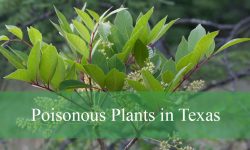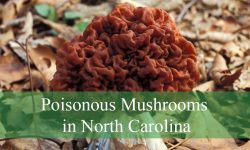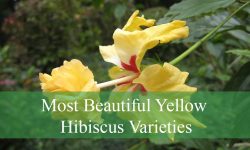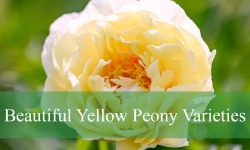Hibiscus plants are a stunning addition to any garden, known for their vibrant, showy blooms and striking foliage. Whether you’re a seasoned gardener or a beginner, exploring the Types of Hibiscus Plants can introduce you to a wide variety of options that will bring color and life to your outdoor space. From tropical varieties to hardy options suited for colder climates, the diversity of hibiscus plants is truly remarkable.
In this guide, we’ll explore 51 different Types of Hibiscus Plants, each with its unique features and care requirements. Whether you’re looking for a hardy hibiscus that thrives in your climate or a more exotic, tropical variety to brighten up your home, there’s a hibiscus type for every garden style. The following list includes both perennial and annual hibiscus plants that vary in size, color, and growing habits.
With the help of pictures and identification tips, you’ll be able to easily recognize and choose the perfect hibiscus variety for your landscape. Let’s dive into the world of Types of Hibiscus Plants and discover the ideal ones for your garden.
Different Types of Hibiscus Plants
Rose of Sharon ‘White Chiffon’ (Hibiscus syriacus ‘White Chiffon’)
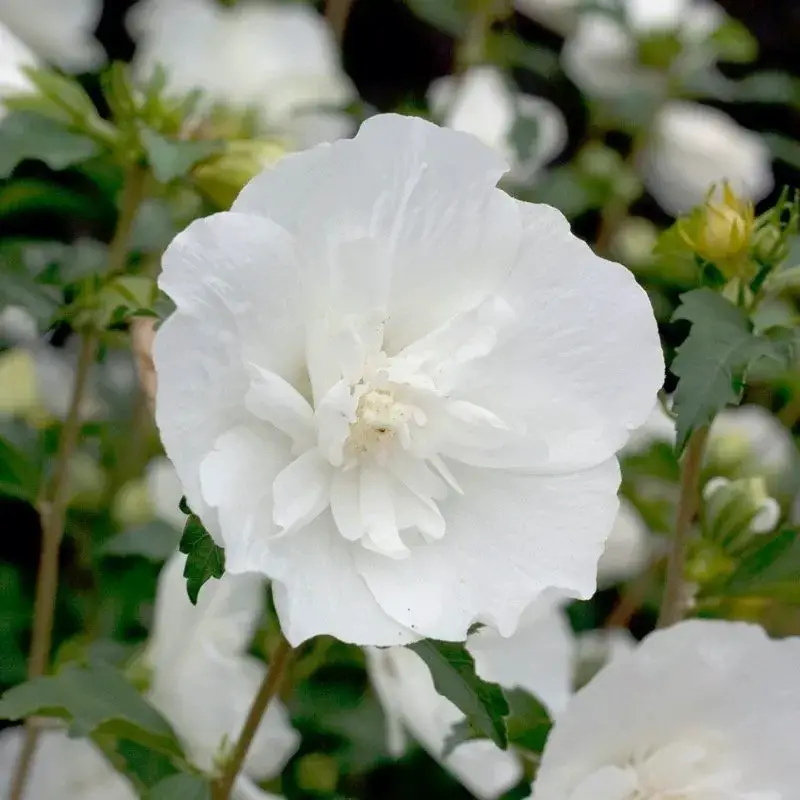
The ‘White Chiffon’ variety of Rose of Sharon is known for its pure, snowy white flowers, which distinguish it from other varieties that often feature dark-colored centers. The delicate ruffle of petals around the stamen gives the flowers a soft, elegant appearance. This versatile cultivar blooms throughout the summer and is heat, salt, and drought-tolerant, making it a hardy option for a variety of climates.
Plant ‘White Chiffon’ in well-drained soil with full or partial sun exposure. Regular watering is essential to keep the soil moist, especially during dry periods. While it is a relatively low-maintenance plant, pruning in early spring can help improve flower production and maintain a tidy appearance.
This cultivar thrives in USDA hardiness zones 5 through 9, reaching a mature height of 8 to 12 feet. It is an excellent choice for adding a touch of sophistication to landscapes, whether as a specimen plant, hedge, or border shrub. Its long bloom period and hardy nature make it a reliable choice for gardeners in various climates.
Rose of Sharon ‘Aphrodite’ (Hibiscus syriacus ‘Aphrodite’)
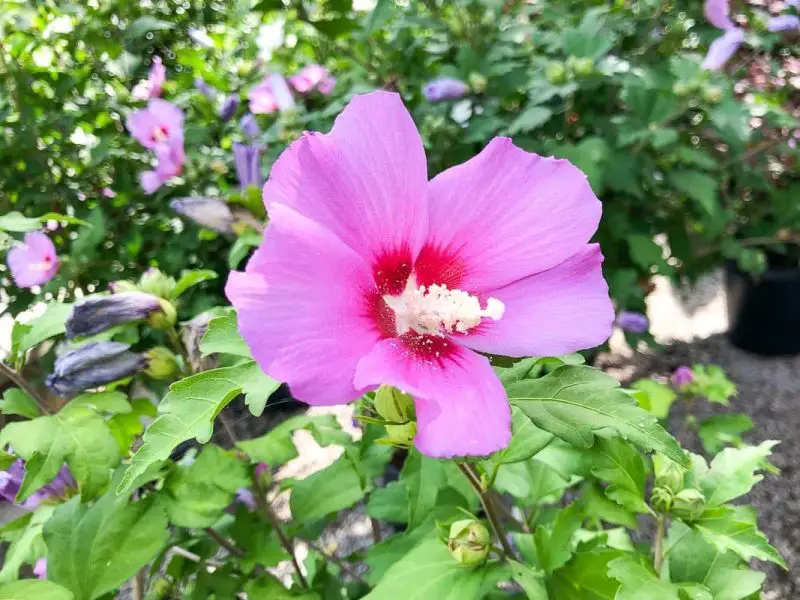
Rose of Sharon ‘Aphrodite’ is a bushy, full-bodied cultivar known for its vibrant pink flowers with deep red throats. This variety grows almost as wide as it does tall, making it a striking feature in the garden. It does not self-seed, which makes it a lower-maintenance option compared to other hibiscus species that can spread prolifically. Its bright, showy blooms last through the summer, attracting pollinators such as bees and butterflies.
For best results, plant ‘Aphrodite’ in full sun with well-drained soil. Regular watering is needed to keep the soil moist, especially in hotter climates. Pruning in early spring will help maintain its shape and promote better flowering. This cultivar thrives in a variety of garden settings, from shrub borders to specimen plantings.
‘Rose of Sharon ‘Aphrodite’ is suitable for USDA hardiness zones 5 through 8. It grows to a mature height of 6 to 10 feet, offering excellent coverage for hedges, privacy screens, or garden focal points. Its compact yet full growth habit makes it a perfect choice for gardeners looking for a reliable and attractive hibiscus.
Rose of Sharon ‘Blue Satin’ (Hibiscus syriacus ‘Blue Satin’)

Rose of Sharon ‘Blue Satin’ is a truly stunning cultivar, known for its showy blue-violet flowers with deep red throats and prominent yellow stamens. The striking combination of colors makes it one of the most visually captivating hibiscus varieties. This cultivar also offers drought and salt tolerance, making it adaptable to various growing conditions.
Plant ‘Blue Satin’ in full or partial sun with well-drained soil. Like other Rose of Sharon varieties, it requires regular watering to keep the soil evenly moist. Once established, it is relatively low-maintenance and can withstand periods of drought. Pruning in early spring will help promote vigorous growth and more abundant blooms throughout the summer.
‘Blue Satin’ thrives in USDA hardiness zones 5 through 9, reaching a mature height of 8 to 12 feet. It works well as a standalone specimen, in borders, or as part of a mixed shrub planting. Its unique blue-violet flowers and easy-care nature make it a great choice for gardeners looking for an eye-catching, hardy shrub.
Rose of Sharon ‘Blueberry Smoothie’ (Hibiscus syriacus ‘Blueberry Smoothie’)

The ‘Blueberry Smoothie’ variety of Rose of Sharon is known for its stunning double blooms that showcase shades of violet, which can sometimes appear truly blue. These large, showy flowers make this cultivar an eye-catching addition to any garden. It is a seedless variety, meaning it won’t self-seed and spread uncontrollably, making it easier to manage. The plant can be grown as a tall, full shrub or pruned into a more tree-like shape with a central trunk.
Plant ‘Blueberry Smoothie’ in a location that receives full to partial sun, and ensure the soil is moist and well-drained. Regular watering is crucial, especially during dry spells, to maintain consistent growth and promote continuous blooming. Pruning in early spring will help maintain the plant’s shape and encourage better flowering.
‘Blueberry Smoothie’ thrives in USDA hardiness zones 5 through 8. It grows to a mature height of around 8 feet, making it suitable for both large landscapes and smaller garden spaces. With its vibrant flowers and manageable growth habit, ‘Blueberry Smoothie’ is perfect for adding color and elegance to your garden from mid-summer through fall.
Rose of Sharon ‘Lavender Chiffon’ (Hibiscus syriacus ‘Lavender Chiffon’)
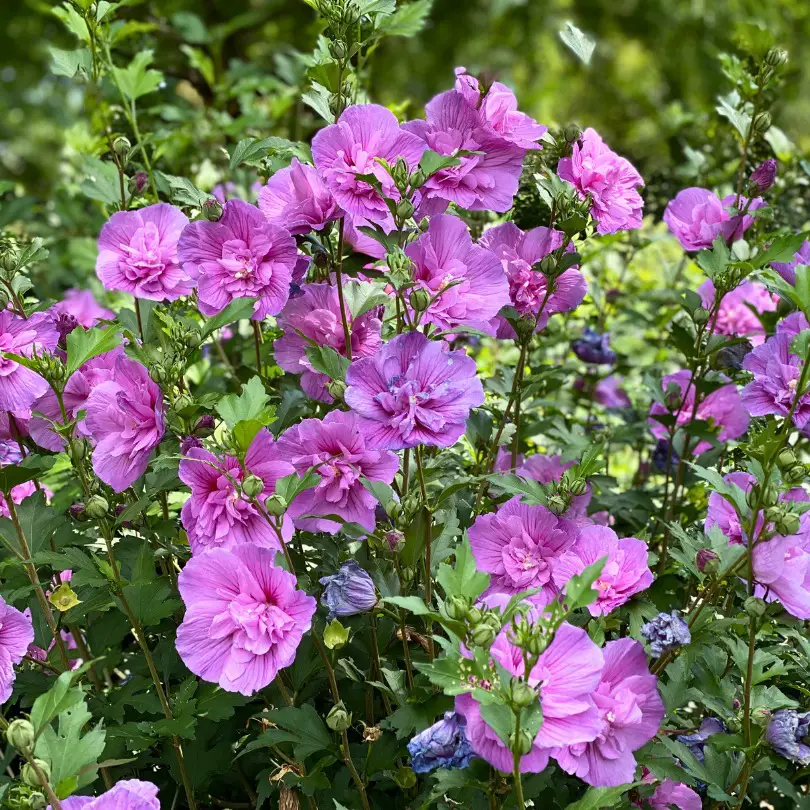
The ‘Lavender Chiffon’ variety of Rose of Sharon is a long-blooming shrub that produces beautiful light purple, semi-double flowers with subtle red veins. This cultivar has a soft, airy appearance, making it a perfect addition to a cottage garden or as part of a mixed planting. It is also a seed-free variety, which means it won’t self-seed and become invasive. The flowers bloom in abundance from summer to fall, providing continuous color throughout the growing season.
Plant ‘Lavender Chiffon’ in full to partial sun with moist, rich, well-drained soil. Regular watering is important to keep the soil evenly moist and encourage healthy growth. Pruning in early spring will help shape the plant and remove any dead wood, allowing for better air circulation and flower production.
‘Lavender Chiffon’ thrives in USDA hardiness zones 5 through 9 and can reach a mature height of 8 to 12 feet. It works well as a hedge, privacy screen, or specimen plant in the garden. Its graceful blooms and compact growth make it a versatile and attractive choice for adding color and texture to your landscape.
Rose of Sharon ‘Lil Kim’ (Hibiscus syriacus ‘Lil Kim’)
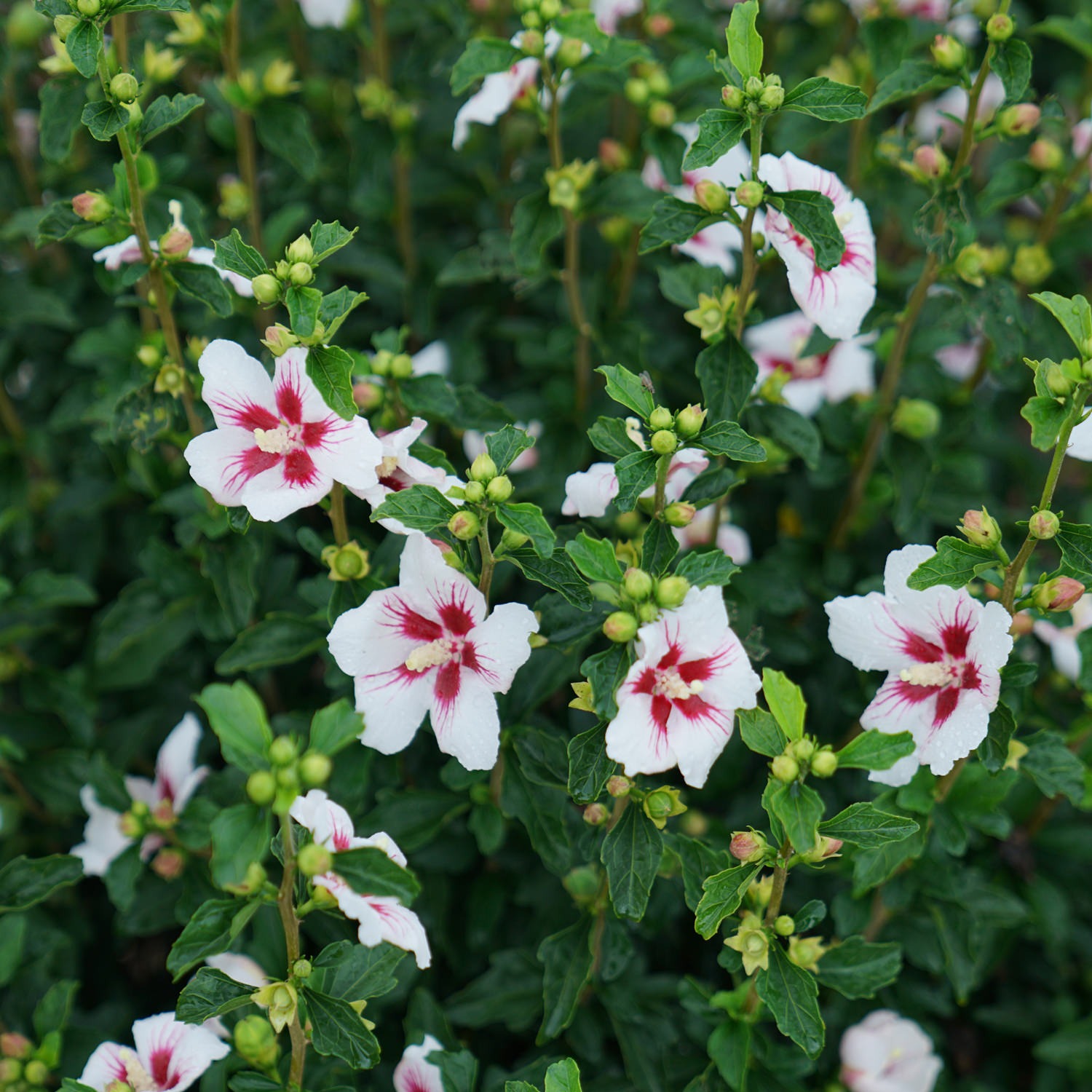
The ‘Lil Kim’ variety of Rose of Sharon is a compact, dwarf cultivar that reaches a mature height of just 3 to 4 feet, making it an ideal choice for small gardens, containers, or borders. Despite its smaller size, it produces an abundance of striking white flowers with vivid red centers and prominent veining. The plant’s compact nature makes it a perfect solution for gardeners who want the beauty of a hibiscus without taking up too much space.
Plant ‘Lil Kim’ in full or partial sun with moist, well-drained soil. Regular watering will help maintain its vibrant blooms, especially during the hotter months. While it doesn’t require heavy pruning, trimming it back in early spring can help maintain its shape and encourage healthier growth.
‘Lil Kim’ thrives in USDA hardiness zones 5 through 9. Its small stature and abundant blooms make it a great option for container gardening or smaller landscapes where space is limited. This variety is also well-suited for attracting pollinators like bees and butterflies, adding both beauty and biodiversity to your garden.
Rose of Sharon ‘Lucy’ (Hibiscus syriacus ‘Lucy’)
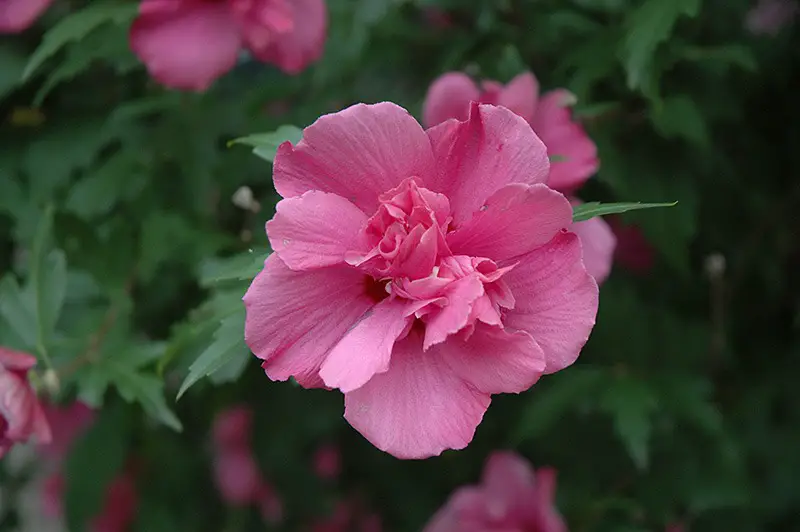
The ‘Lucy’ cultivar of Rose of Sharon is a stunning shrub known for its showy, full, double-petaled flowers in a rich magenta hue. This plant’s bushy growth habit makes it an excellent choice for use as a hedge or privacy screen. Alternatively, it can be pruned to create a treelike structure, offering flexibility in design. Its vibrant flowers appear throughout the summer, adding a burst of color to any garden.
Plant ‘Lucy’ in full sun for the most abundant blooms, though it will also tolerate partial shade. The soil should be moist and well-drained, and regular watering is essential, especially during dry periods. To maintain the plant’s health and shape, water deeply each week and remove any dead growth in early spring.
‘Lucy’ thrives in USDA hardiness zones 5 through 8 and can reach a mature height of 6 to 8 feet. Its striking flowers and adaptable growth habit make it a great addition to both large and small gardens. Whether used as a hedge or focal point, ‘Lucy’ will brighten up any landscape with its stunning blooms.
Rose of Sharon ‘Minerva’ (Hibiscus syriacus ‘Minerva’)
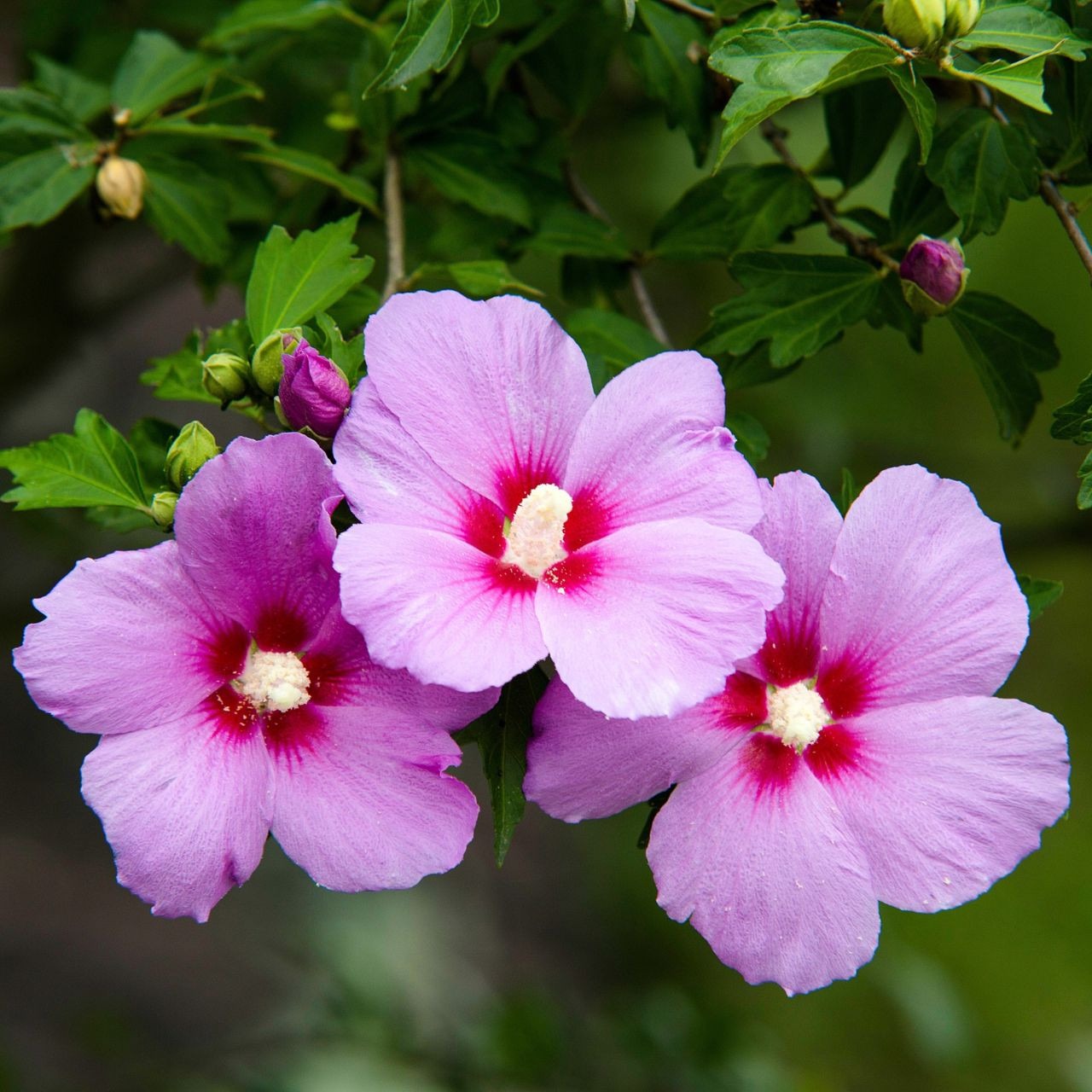
Rose of Sharon ‘Minerva’ is a striking cultivar that produces large, pinkish-purple flowers with a deep red throat and ivory stamen. This variety is known for its drought tolerance and can handle drier conditions better than many other Rose of Sharon cultivars. Its vibrant blooms appear throughout the summer, making it a valuable addition to any garden looking to add some color and interest.
Plant ‘Minerva’ in full or partial sun with loamy, well-drained soil. It prefers consistently moist soil, especially during its first season, but once established, it can tolerate drier conditions. To encourage a fuller and bushier growth habit, prune back a few buds in late winter or early spring, which will also result in larger blooms later in the season.
‘Minerva’ grows to a mature height of around 10 feet and thrives in USDA hardiness zones 5 through 8. Its striking flowers and drought tolerance make it a versatile plant for various garden designs. Whether planted as a specimen shrub or part of a mixed planting, ‘Minerva’ is sure to stand out with its beautiful blossoms.
Swamp Hibiscus (Hibiscus coccineus)
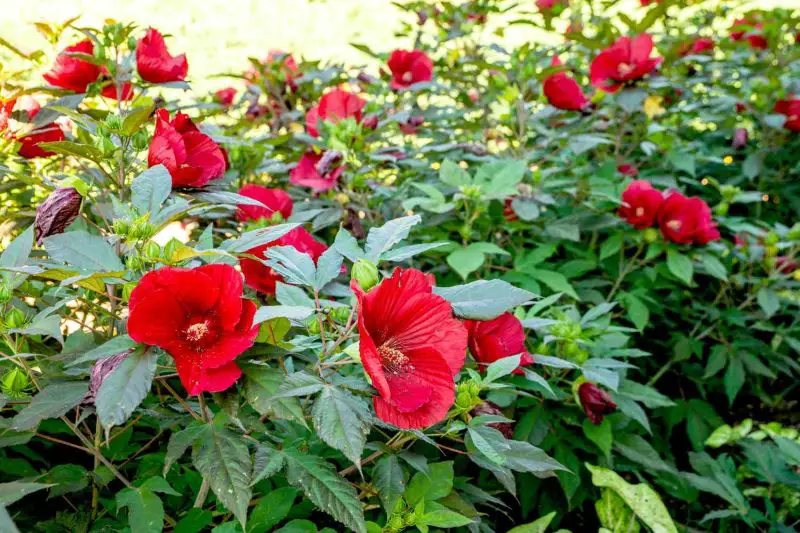
Swamp hibiscus is a tall and vigorous shrub known for its striking red flowers, which bloom in late summer to fall. The large, trumpet-shaped flowers stand out against the plant’s dark green foliage, making it an attractive addition to any garden. This species thrives in humid, sunny environments and is particularly well-suited for wet soils near ponds or creeks, where other plants struggle to survive.
To grow swamp hibiscus, plant it in full to partial sun in moist, well-draining soil. It can tolerate both sandy and clay-based soils. In areas with cold winters, a layer of mulch can be applied in late fall to protect the plant from frost. Regular watering is essential to keep the soil evenly moist, especially during dry spells.
The swamp hibiscus thrives in USDA hardiness zones 6 through 9. With a mature height of over 6 feet, it can grow as a tall shrub that adds dramatic color to landscapes. Its adaptability to moist environments makes it an excellent choice for water garden areas or along pond edges.
Cotton Rose (Hibiscus mutabilis)

Cotton rose is a fast-growing hibiscus variety that can quickly reach tree-like proportions, growing up to 15 feet in height. Known for its large, long-lasting flowers, the cotton rose blooms in shades of white, pink, and red. These blossoms are followed by fuzzy seed pods, which give the plant its common name. It is a low-maintenance, deer-resistant plant that thrives in a variety of garden settings.
Plant cotton rose in full or partial sun and in loamy, well-drained soil. It requires consistent moisture but does not tolerate waterlogging. To encourage healthy growth, prune away dead or damaged growth in late winter or early spring. This plant is a great addition to larger landscapes, providing vibrant color throughout the growing season.
Cotton rose is best suited for USDA hardiness zones 7 through 11. With its rapid growth and large size, it makes an excellent backdrop plant for borders or as a specimen in a large garden. The plant’s low maintenance needs make it ideal for gardeners seeking a striking, hassle-free hibiscus variety.
Rose of Sharon (Hibiscus syriacus)
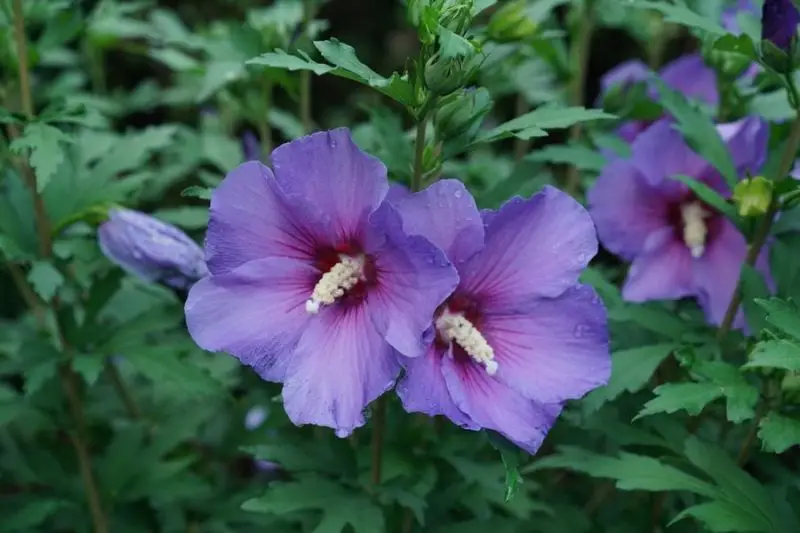
Rose of Sharon is a popular flowering shrub that features showy blooms in a variety of colors, including pink, purple, lavender, and white. These large flowers often have dark centers that add contrast to the soft petals, making the plant a standout in any garden. It grows into an upright, vase-shaped form but can also be pruned to resemble a small tree, offering versatility in garden design.
To grow rose of Sharon, choose a spot with full to partial sun and well-drained, moist soil. While the plant is tolerant of drought once established, regular watering will help maintain its lush appearance. Pruning in early spring can help shape the plant and promote better flowering. The plant is relatively low maintenance and can withstand a range of soil conditions.
Rose of Sharon is suitable for USDA hardiness zones 5 through 8. It typically grows between 8 to 12 feet in height, making it a perfect choice for hedges, privacy screens, or as a stand-alone specimen. This shrub will self-seed, so gardeners may need to remove volunteer plants to keep it contained.
Rose of Sharon ‘Blue Chiffon’ (Hibiscus syriacus ‘Blue Chiffon’)
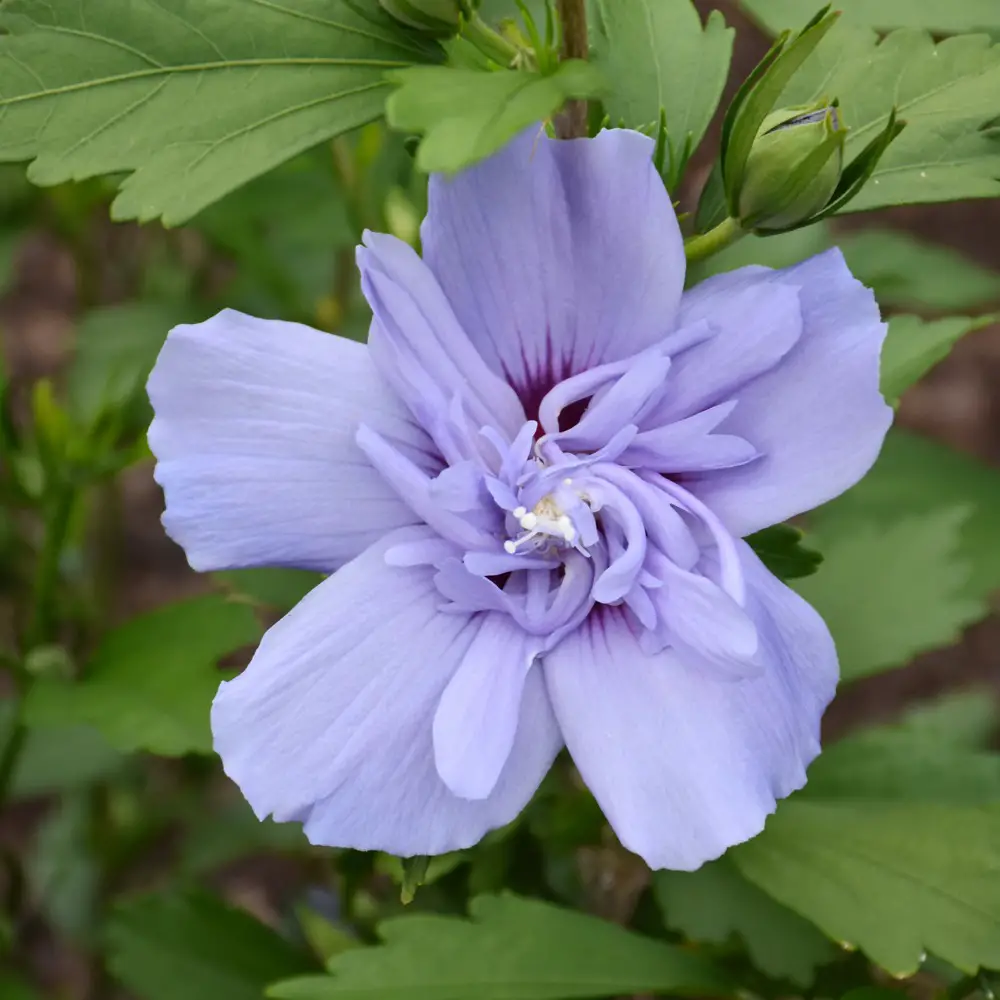
The ‘Blue Chiffon’ variety of Rose of Sharon is known for its stunning pale blue flowers with a lacy ruffle of inner petals. This cultivar adds a touch of elegance to gardens with its unique color and soft texture. It blooms from mid-summer through fall, attracting attention with its large, showy flowers that resemble small, delicate roses. Its rounded growth habit makes it an ideal choice for both formal and informal landscapes.
For optimal growth, plant ‘Blue Chiffon’ in full or partial sun and in moist, well-drained soil. Like other Rose of Sharon varieties, it is relatively low-maintenance but benefits from occasional pruning to encourage better flowering and maintain its shape. Regular watering is essential to keep the soil moist, especially during dry spells.
‘Blue Chiffon’ thrives in USDA hardiness zones 5 through 9. It reaches a mature height of 8 to 12 feet and works well as a shrub for borders or as a specimen plant in larger gardens. Its striking blue blooms make it a standout feature in any landscape, providing color and visual interest throughout the growing season.
Rose of Sharon ‘Sugar Tip’ (Hibiscus syriacus ‘Sugar Tip’)
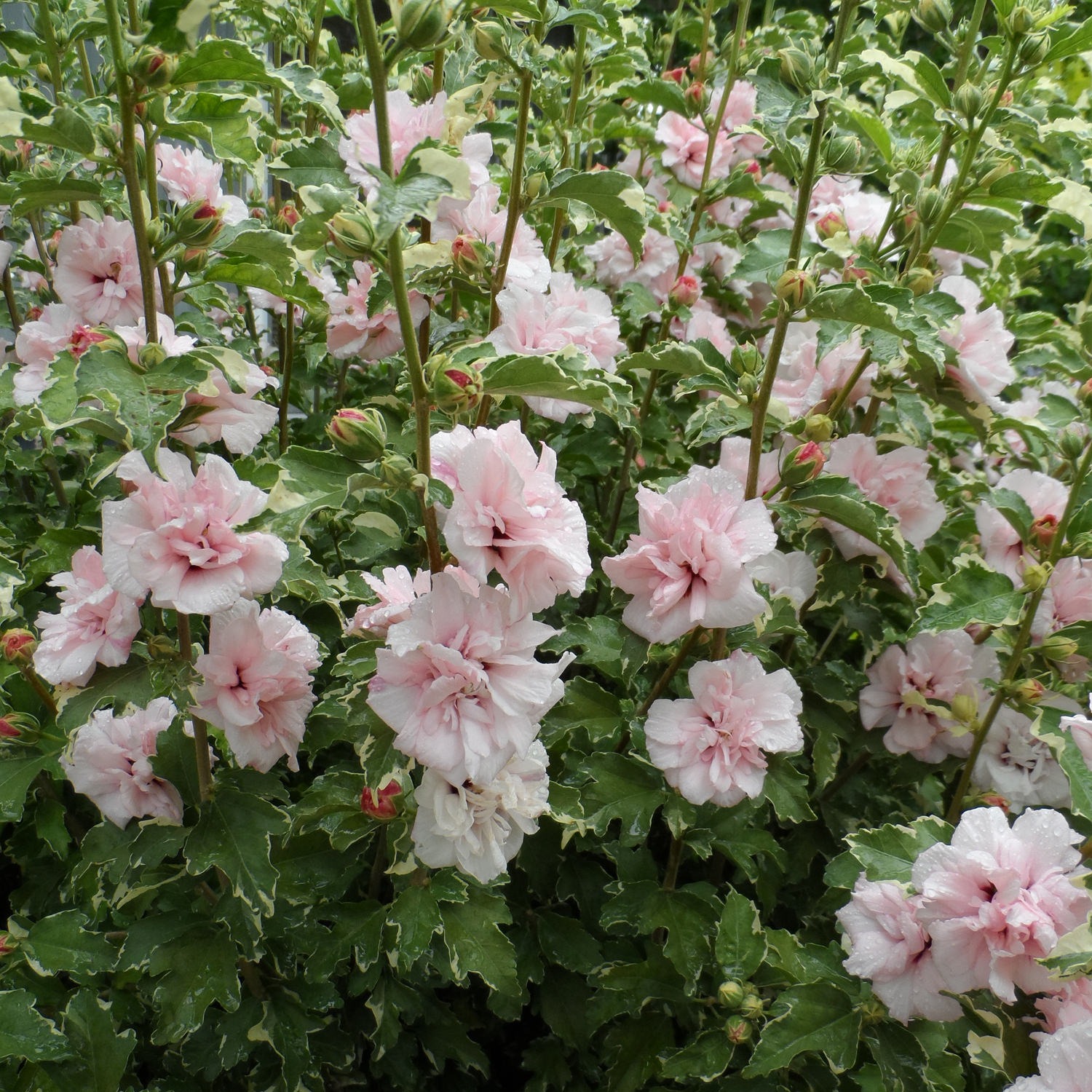
The ‘Sugar Tip’ variety of Rose of Sharon features soft pink, double-petaled flowers with deep red centers, adding a whimsical touch to any garden. This cultivar also stands out with its attractive green and white variegated leaves, providing additional visual interest beyond the blooms. ‘Sugar Tip’ is more compact than other varieties, reaching a height of about 5 to 6 feet, making it perfect for smaller spaces or as a low-maintenance shrub.
Plant ‘Sugar Tip’ in full sun for the best bloom production, and ensure the soil is well-drained and moist. Although it can tolerate some drought once established, consistent watering will help it thrive. Unlike other varieties, ‘Sugar Tip’ does not produce seeds, reducing the potential for self-seeding and making it easier to manage in the garden.
This variety of Rose of Sharon is best suited for USDA hardiness zones 5 through 8. Its compact size and low maintenance needs make it an excellent choice for those who want a colorful, hassle-free shrub that adds beauty without the risk of unwanted spreading. With its delightful pink flowers and variegated leaves, ‘Sugar Tip’ is sure to be a charming addition to any garden.
Rose of Sharon ‘Red Heart’ (Hibiscus syriacus ‘Red Heart’)
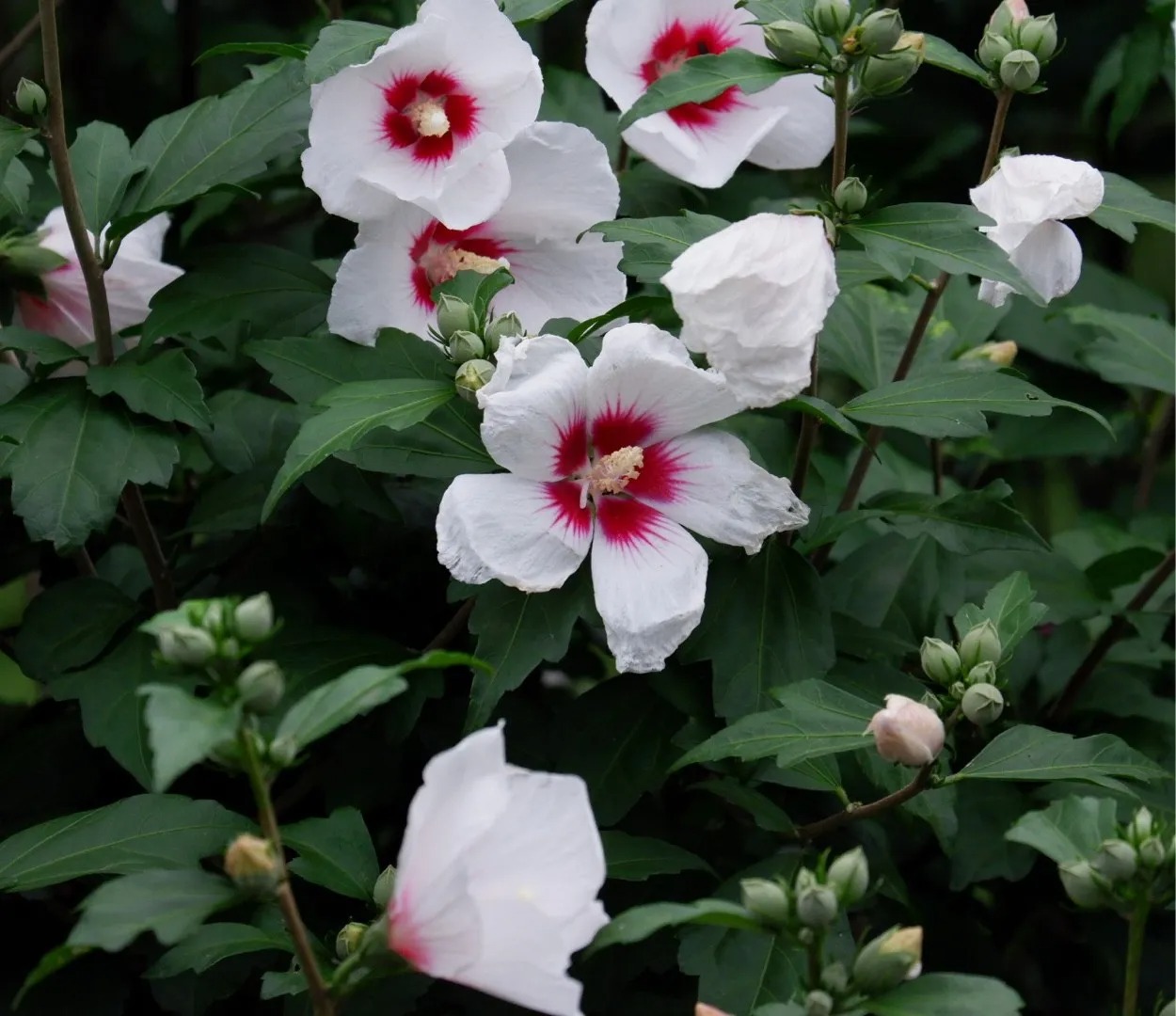
The ‘Red Heart’ variety of Rose of Sharon is known for its striking bicolor flowers, with pure white petals and deep red throats, highlighting yellow stamens. This cultivar blooms profusely from midsummer to fall, offering a vibrant display of color in the garden. The flowers are short-lived, but they appear in abundance, creating a stunning effect over an extended period. The plant’s strong stems and upright growth make it an excellent choice for use as a hedge or in group plantings.
For best results, grow ‘Red Heart’ in full to partial sun and ensure the soil is moist, well-drained, and rich in nutrients. While it can tolerate some drought once established, regular watering helps maintain its vigorous growth and flower production. Prune dead or damaged growth in late winter to encourage fresh new growth and more blooms in the upcoming season.
‘Red Heart’ thrives in USDA hardiness zones 5 through 9, reaching a mature height of 8 to 10 feet. Its ability to withstand a range of conditions and its stunning, eye-catching flowers make it a popular choice for gardeners looking for a long-lasting and reliable shrub. Whether used as a hedge or a focal point, ‘Red Heart’ adds beauty and structure to any landscape.
Rose of Sharon ‘Purple Pillar’ (Hibiscus syriacus ‘Purple Pillar’)
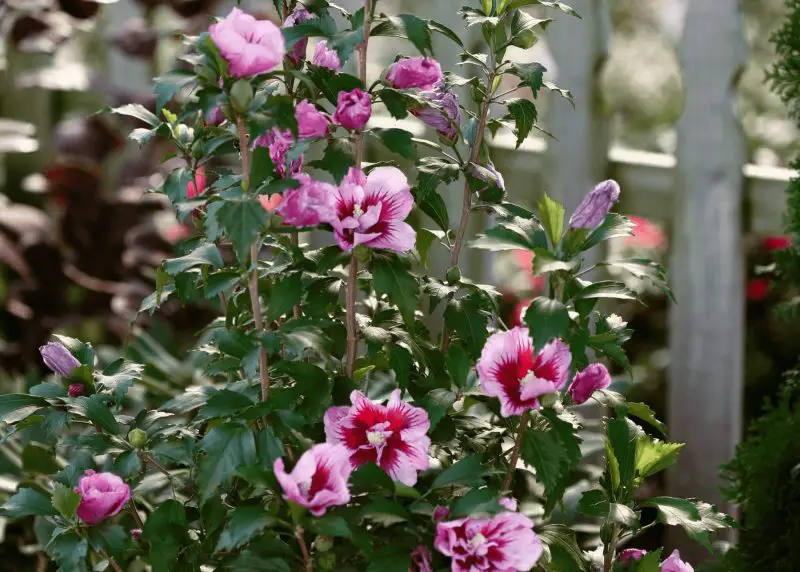
The ‘Purple Pillar’ cultivar of Rose of Sharon is known for its tall, narrow growth habit, making it ideal for compact spaces. Unlike many other Rose of Sharon varieties that spread out wide, ‘Purple Pillar’ grows upright and can reach a height of 10 to 16 feet while staying just 3 feet wide. This unique form makes it a great choice for narrow garden beds or as an accent plant in smaller landscapes.
The flowers of ‘Purple Pillar’ are pale purple double blooms with deep red throats and prominent, pale yellow stamens. This cultivar thrives in consistently moist soil, especially during its first season, but once established, it can tolerate some drought. Regular watering and good soil drainage are essential to support healthy growth and maximize flowering potential.
‘Purple Pillar’ is well-suited to USDA hardiness zones 5 through 9. Its compact, columnar form and stunning flowers make it an excellent choice for vertical gardening or as a backdrop in flower beds. Whether used as a specimen plant or planted in groups, ‘Purple Pillar’ adds a touch of elegance and color to any garden setting.
Rose of Sharon ‘Orchid Satin’ (Hibiscus syriacus ‘Orchid Satin’)
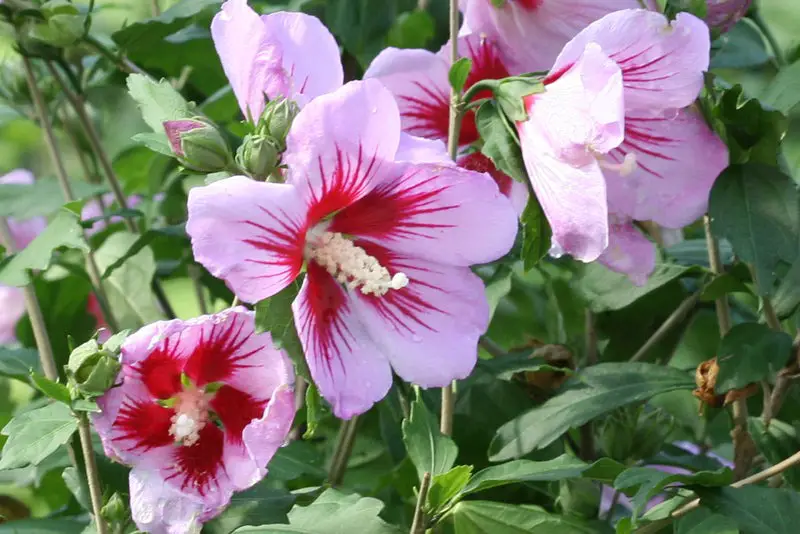
The ‘Orchid Satin’ cultivar of Rose of Sharon stands out with its stunning pale-pink blooms accented by dramatic red throats and prominent red veining. These large, single flowers can be seen from a distance, making this variety an eye-catching addition to any garden. The full, broad leaves and upright growth habit make it an excellent choice for hedges, borders, and privacy screens.
This hibiscus thrives in full sun and prefers moist, well-drained soil. To ensure vibrant blooms throughout the growing season, keep the soil evenly moist, especially during hot summer months. ‘Orchid Satin’ grows to a mature height of 8 to 12 feet, providing a robust presence in the garden without being overly invasive.
With a USDA hardiness zone range of 5 to 9, ‘Orchid Satin’ is adaptable to a variety of climates. Its dramatic flowers and full foliage make it a fantastic addition to landscapes where space allows for its larger form. Whether planted as a specimen shrub or in a group, ‘Orchid Satin’ will certainly make a statement in your garden.
Rose of Sharon ‘Purple Satin’ (Hibiscus syriacus ‘Purple Satin’)
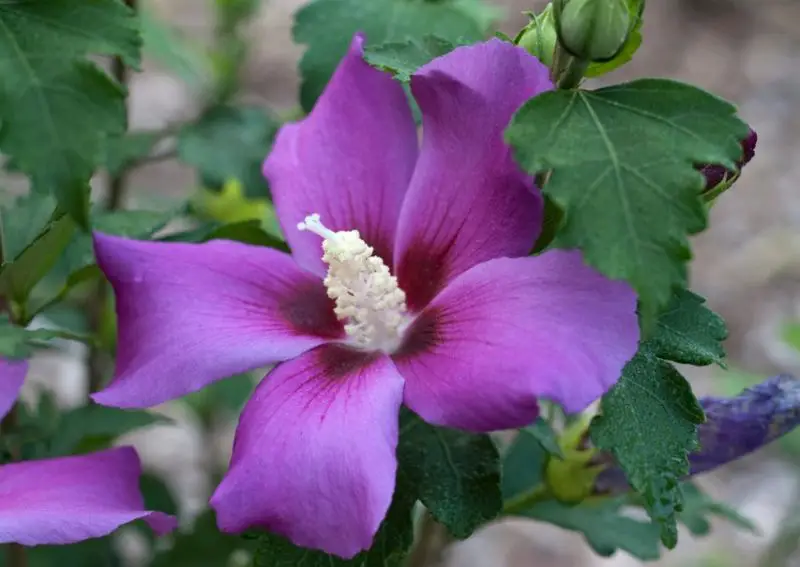
Rose of Sharon ‘Purple Satin’ is known for its long-lasting, rich purple blooms with dark red throats and ivory stamens. This cultivar is a favorite for gardeners looking for a hibiscus that thrives in full sun and continues to flower all summer long. Its heat and drought tolerance make it a resilient plant that can handle various growing conditions, providing reliable beauty throughout the warmer months.
Growing to a mature height of 8 to 12 feet, ‘Purple Satin’ can spread as wide as it does tall, so it’s best to plant it with enough space to accommodate its full growth habit. The plant prefers rich, well-drained soil and should be watered when the soil begins to dry out to maintain its health and vibrant blooms.
‘Purple Satin’ thrives in USDA hardiness zones 5 through 9 and is a versatile choice for large gardens or areas where it can stand alone as a feature plant. Its bold purple flowers and long blooming period make it a striking focal point in any garden design.
Rose of Sharon ‘Sugar Tip Gold’ (Hibiscus syriacus ‘Sugar Tip Gold’)
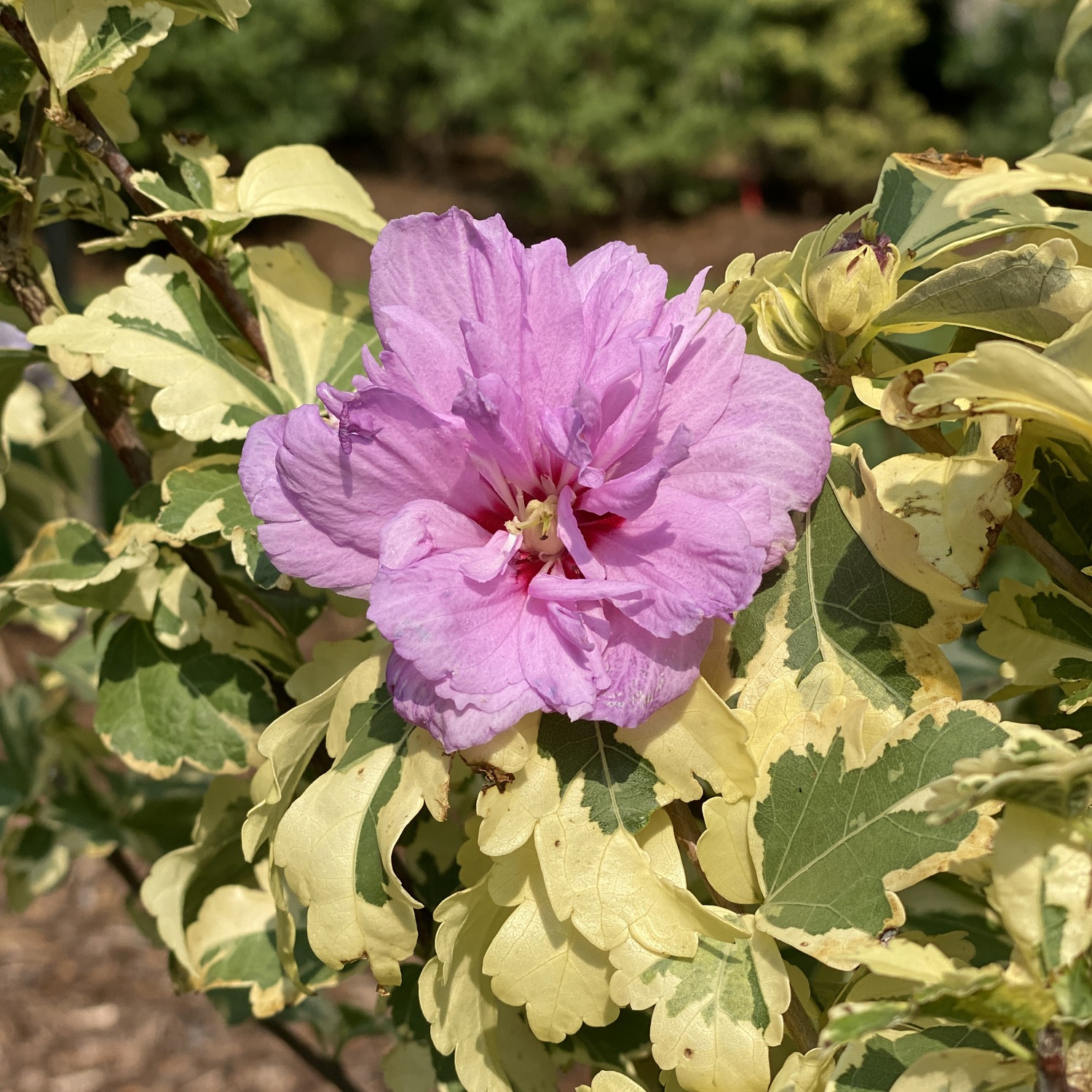
The ‘Sugar Tip Gold’ cultivar is a unique and low-maintenance variety of Rose of Sharon, known for its stunning variegated foliage. The green-and-gold leaves appear in spring and continue to provide color through the fall. This cultivar’s compact growth habit, reaching only 4 to 5 feet in height, makes it perfect for containers, borders, or small garden spaces. The double purple blooms stand out against the gold foliage, offering a striking contrast.
Plant ‘Sugar Tip Gold’ in full sun and well-drained soil for the best results. Keep the soil evenly moist to support healthy growth and vibrant blooms. This cultivar is sterile, so there’s no need to worry about it spreading uncontrollably in the garden.
With its USDA hardiness zone range of 5 to 9, ‘Sugar Tip Gold’ is adaptable to various climates and provides three-season color, making it a great addition to any landscape. Whether used as a border plant, in containers, or as an accent in flower beds, ‘Sugar Tip Gold’ adds year-round interest with its unique foliage and beautiful blooms.
Tropical Hibiscus (Hibiscus rosa-sinensis)
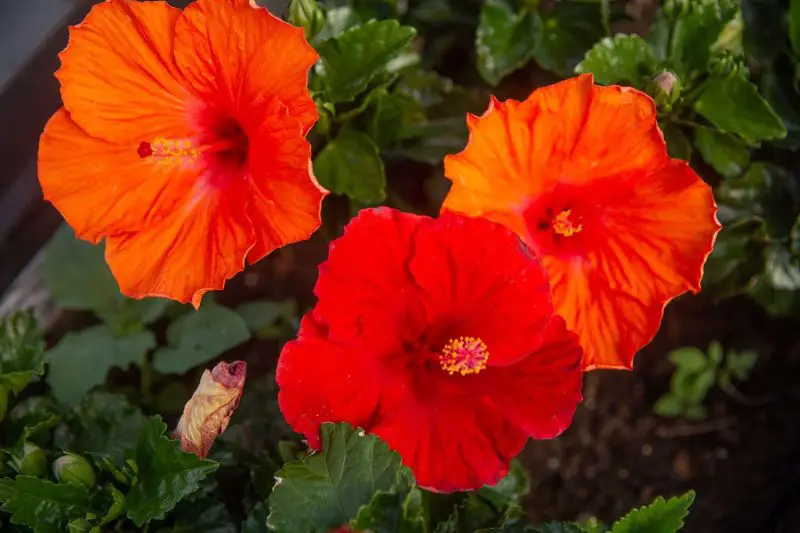
Tropical hibiscus is a stunning shrub known for its vibrant, trumpet-shaped blooms in a wide range of colors, including white, red, pink, orange, yellow, and purple. The flowers can reach up to six inches in diameter, making this hibiscus a standout in any garden. This plant thrives in mild climates and is perfect for perennial gardens in warmer regions, where it can flourish year-round. In cooler areas, it is often grown as an annual or in containers for full-sun exposure.
The tropical hibiscus prefers acidic soil and requires frequent watering, especially during hot, dry conditions. It’s important to keep the soil consistently moist, but not soggy. In extremely hot weather, you may need to water the plant twice a day. This variety typically reaches a mature height of 4 to 10 feet and can grow in both full and partial sun. It is best suited for USDA hardiness zones 9-12.
If you’re in a tropical or subtropical region, tropical hibiscus is an ideal addition to your garden, providing an explosion of color with its beautiful, large blooms. In cooler climates, consider planting it in containers to bring its striking flowers indoors during the colder months.
Hardy Hibiscus (Hibiscus moscheutos)
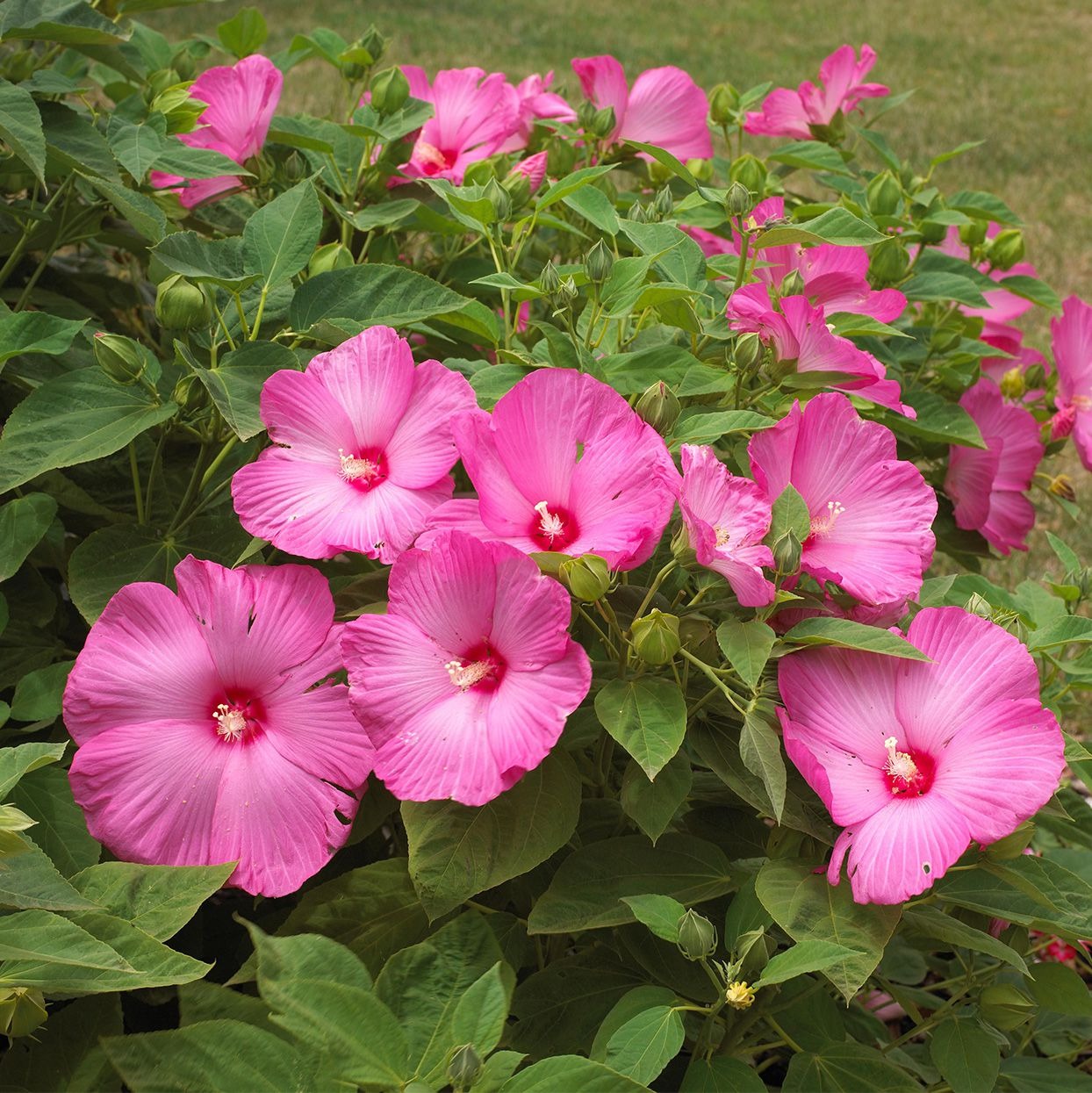
Hardy hibiscus is a wonderful choice for gardeners who love hibiscus but live in cooler climates. Native to the Midwest and East Coast of the United States, this hibiscus is much more tolerant of cold weather compared to its tropical relatives. Known for its massive, showy blooms, hardy hibiscus flowers come in colors like white, red, pink, and blue, and are perfect for adding a bold touch to gardens in USDA hardiness zones 4-9.
This hibiscus grows best in full sun and prefers moist, rich soil. Hardy hibiscus plants can reach heights between 3 to 7 feet, making them ideal for creating a striking backdrop in flower beds or as a focal point in larger landscapes. These plants thrive in wetland areas, where their preference for consistently moist soil can be easily met. Be sure to water deeply to maintain evenly moist soil, as this promotes healthy growth and abundant blooms.
Hardy hibiscus is an excellent choice for those looking for a long-lasting, cold-hardy hibiscus variety that can withstand cooler temperatures while providing stunning flowers in late summer to early fall.
Roselle (Hibiscus sabdariffa)
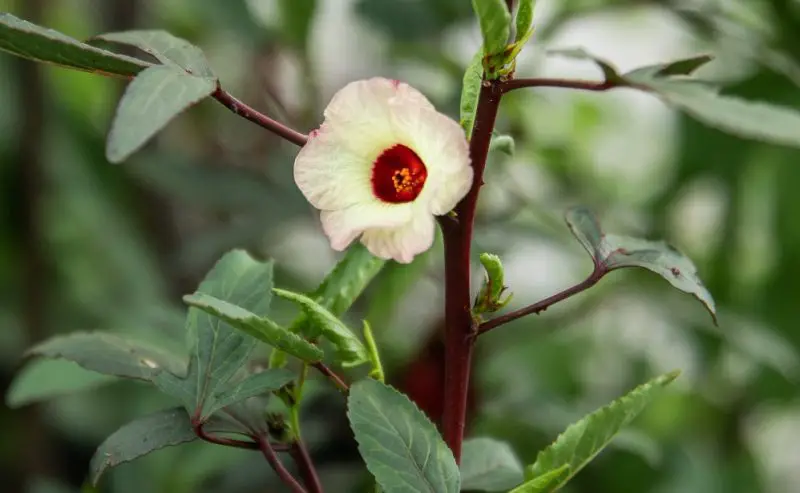
Roselle, also known as Florida cranberry, is a unique variety of hibiscus prized for its deep red calyces, which are used to make tangy beverages like sorrel and agua de jamaica. The flowers of roselle open into delicate pale pink blooms with striking red centers. This shrubby hibiscus thrives in full sun and well-drained soil, making it an excellent addition to warm, sunny garden spaces.
Roselle is best suited for USDA hardiness zones 9-10, where the plant can grow to a mature height of around 7 feet. It requires consistent moisture, but it’s important to ensure the soil doesn’t become soggy. As an edible hibiscus, roselle offers more than just beauty—it also provides a functional crop for gardeners interested in harvesting the calyces for culinary purposes.
Planting roselle in a sunny spot with well-drained soil will allow it to flourish and produce its vibrant blooms. It’s a great option for gardeners interested in both ornamental plants and those that offer a harvestable product.
Sea Hibiscus (Hibiscus tiliaceus)
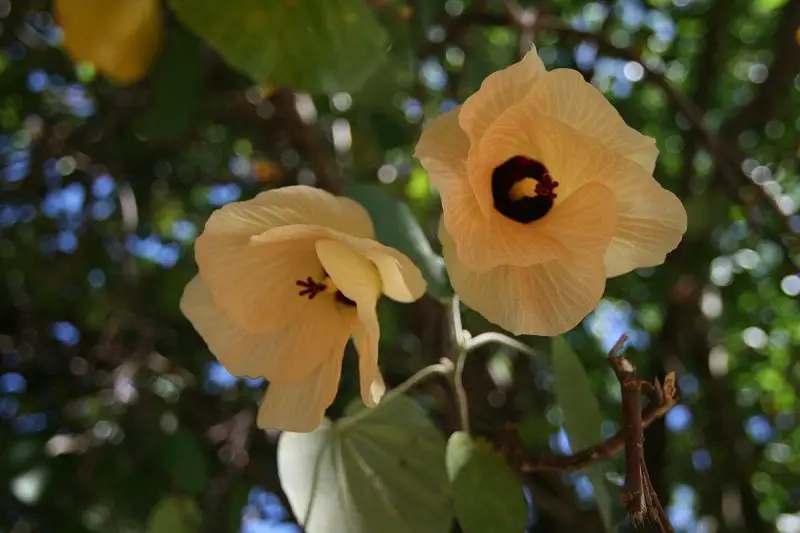
Sea hibiscus, also known as mahoe, is a tropical shrub native to Asia, prized for its stunning yellow blooms with deep red centers. Each flower lasts for just one day, making their brief, vibrant appearance even more striking. This plant is commonly grown in tropical and subtropical areas worldwide but can be considered invasive in coastal regions of southern Florida. It thrives in full sun and well-drained soil, reaching heights of 12 to 25 feet.
Sea hibiscus is best suited for USDA hardiness zones 10-12, making it ideal for regions that experience warm temperatures year-round. While it requires infrequent watering, the soil should be allowed to dry between waterings to prevent overwatering. Its large, showy blooms and tolerance for coastal conditions make it an excellent choice for coastal gardens, though care should be taken to manage its growth in areas where it may spread uncontrollably.
This species is perfect for gardeners in tropical regions looking for a bold, eye-catching plant that offers both ornamental beauty and an ability to thrive in coastal settings.
Cranberry Hibiscus (Hibiscus acetosella)
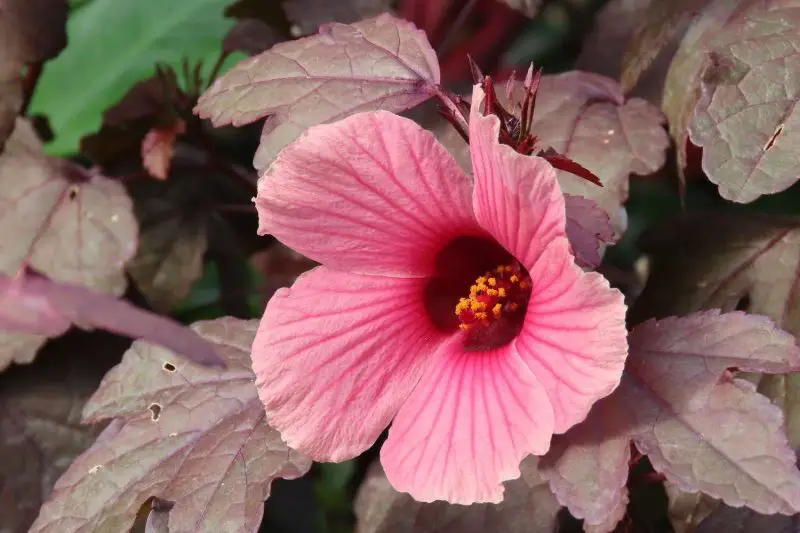
Cranberry hibiscus is a striking hibiscus variety that is most often grown for its deeply red, palmate-shaped leaves rather than its flowers. The plant’s foliage adds rich, dark color to gardens, with the deepest red hues developing under full sun conditions. Though the flowers may appear in pink or red during the fall, they are not as prominent as the striking leaves. Cranberry hibiscus is suitable for USDA hardiness zones 9a-11b, growing to a mature height of 3 to 6 feet.
This hibiscus is well-suited for growing in areas with well-drained soil and full sun, and it requires regular watering to keep the soil moist. The leaves are also edible, providing additional value for gardeners interested in unique, culinary plants. Cranberry hibiscus is a great option for adding dramatic foliage color and texture to flower beds, containers, or borders.
Perfect for gardeners looking to incorporate both ornamental beauty and edible plants into their landscape, cranberry hibiscus is an excellent choice for zones that support its warm-weather growth.
Coral Hibiscus (Hibiscus schizopetalus)
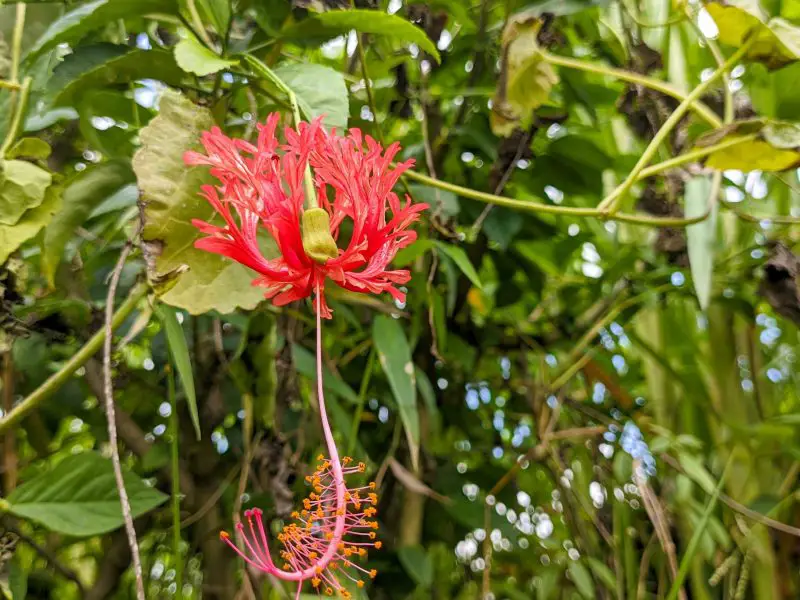
Coral hibiscus, also known as fringed hibiscus or pagoda flower, is renowned for its unique, pendant-like flowers that hang down rather than growing upright. The flowers have delicately feathered red petals that curl upward from a long, prominent stamen, creating an elegant, almost whimsical appearance. This species is typically grown as a container plant in cooler climates but can be a perennial border or hedge plant in tropical areas.
Coral hibiscus thrives in full sun and prefers rich, moist, well-drained soil. It is best suited for USDA hardiness zones 10-12 and can grow up to 10 to 12 feet in height. To maintain its health, keep the soil consistently moist but not soggy. The striking red flowers of coral hibiscus make it a standout in tropical gardens and an interesting option for those seeking a plant with unique, hanging blooms.
For gardeners in tropical climates or those willing to grow it as a container plant in cooler regions, coral hibiscus offers a dramatic and distinctive addition to any landscape.
Swamp Rose-Mallow (Hibiscus grandiflorus)
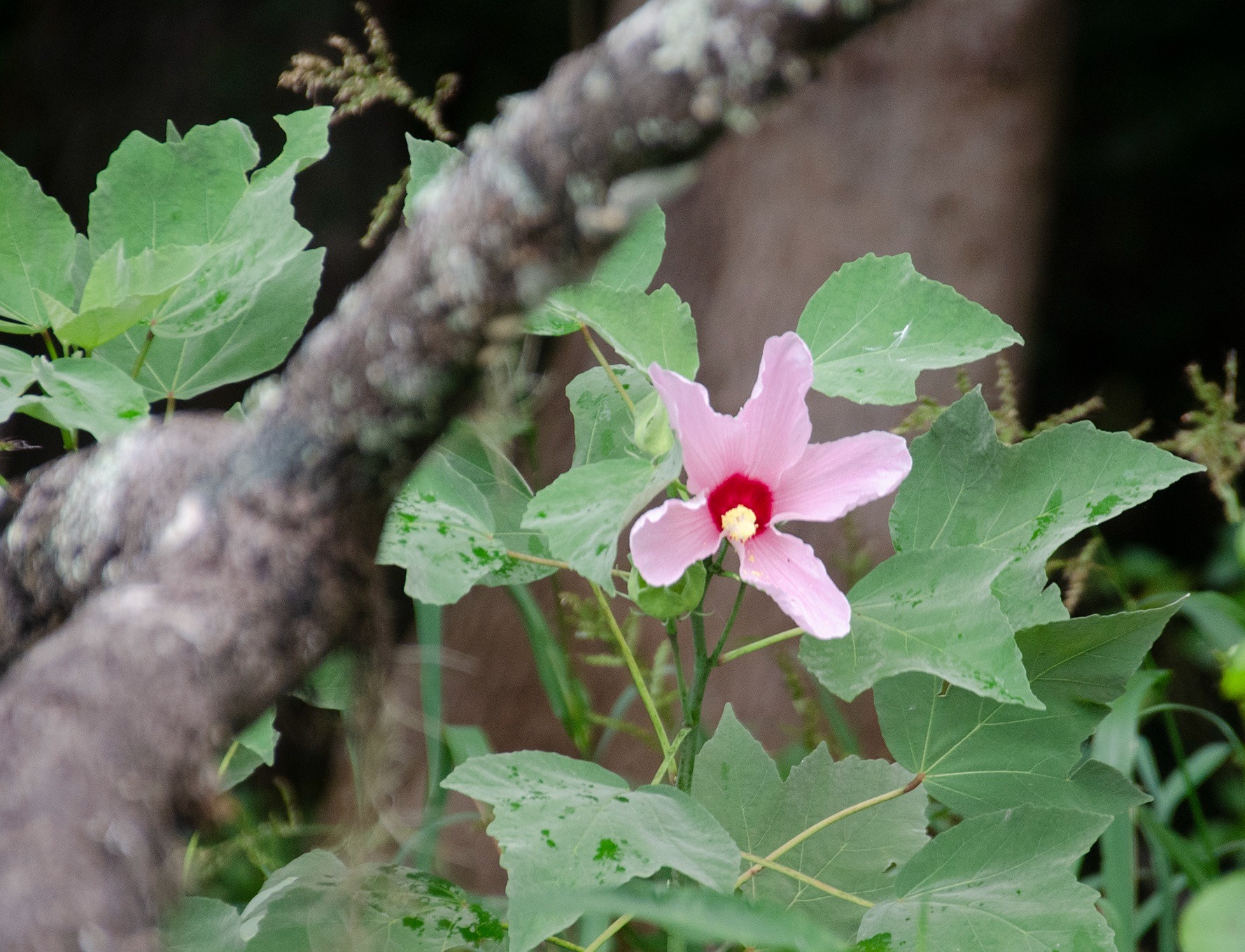
Swamp rose-mallow is a stunning native plant known for its large, eye-catching pink blossoms that can appear in clusters of up to 20 flowers at once during peak bloom. The flowers are set against lush, velvety green leaves, creating a striking contrast. This plant thrives in wet, marshy environments, making it ideal for rain gardens or low-lying areas prone to frequent water accumulation. It grows naturally in the Midwest and Southeast and prefers areas with full or partial sun exposure.
Best suited for USDA hardiness zones 5-9, swamp rose-mallow reaches a mature height of 3 to 6 feet. It thrives in acidic to neutral soil and benefits from soaking the plant or frequent standing water, replicating its natural habitat. This hardy plant is easy to maintain, making it a great option for gardeners looking for low-maintenance, showy blooms in wetland or moisture-rich garden areas.
For those interested in incorporating a native species with stunning flowers into their garden, swamp rose-mallow is an excellent choice for damp and water-prone areas.
Hamabo Hibiscus (Hibiscus tiliaceus)
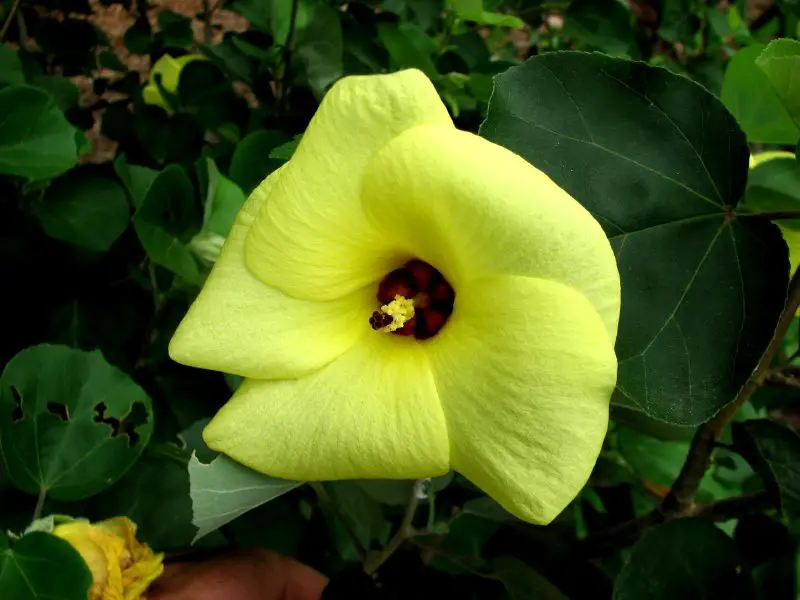
Native to China, Korea, and Japan, hamabo hibiscus is a hardy hibiscus variety that offers bright, cheerful blooms from late spring through fall. The flowers begin as vibrant yellow and gradually transition to orange as they mature. This color change adds a dynamic touch to the plant, which is also a magnet for pollinators such as hummingbirds and butterflies. The plant thrives in full sun to partial shade and requires moist, well-drained soil.
Hamabo hibiscus grows to a mature height of 6 to 15 feet and is best suited for USDA hardiness zones 8-12. The plant’s attractive flowers and ability to thrive in both full sun and partial shade make it a versatile addition to any garden. To keep the plant healthy, ensure that the soil remains evenly moist, but avoid over-watering to prevent root rot.
If you’re looking for a hibiscus plant that attracts pollinators and provides long-lasting color, hamabo hibiscus is a beautiful and hardy option for a variety of garden settings.
Halberd-Leaf Rosemallow (Hibiscus laevis)
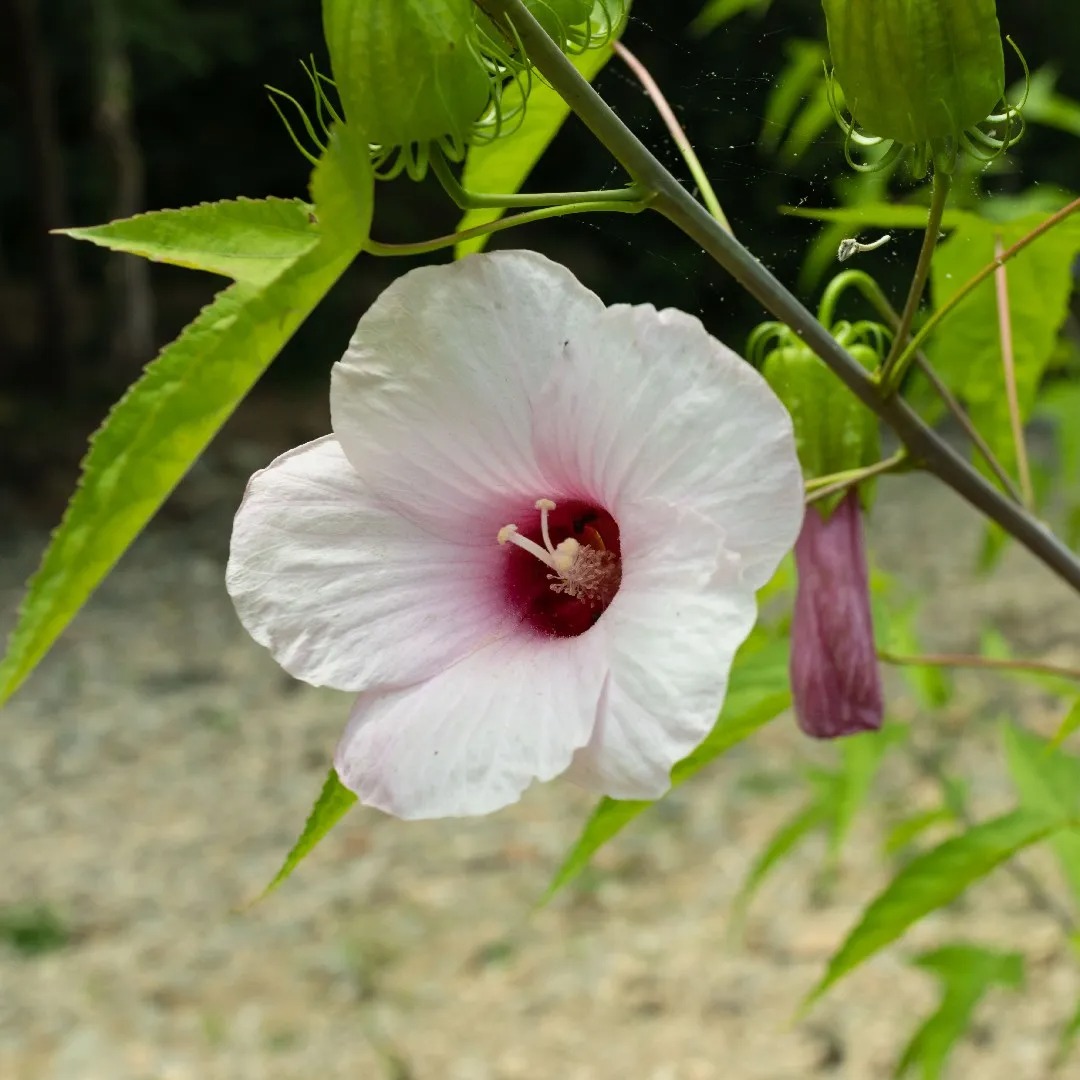
Halberd-leaf rosemallow is a fast-growing native plant that thrives in moist environments such as rain gardens and wetland habitats. Known for its delicate, cup-shaped blooms, this species produces flowers in shades of pink or creamy white, with a dark red center. The flowers bloom throughout the summer, adding a touch of elegance to gardens with wet, marshy areas. This plant is particularly suited to sandy loam and moist soils.
Reaching a mature height of about 6 feet, halberd-leaf rosemallow does best in partial sun and requires very high water needs to replicate its natural habitat. It is suitable for USDA hardiness zones 4-9, making it adaptable to a range of climates. The plant’s high water requirements and love for wet soil make it ideal for creating beautiful, low-maintenance garden spots in areas prone to flooding or frequent moisture.
For gardeners in need of a fast-growing, water-loving plant with beautiful hibiscus-like flowers, halberd-leaf rosemallow is a fantastic choice.
Hawaiian White Hibiscus (Hibiscus arnottianus)
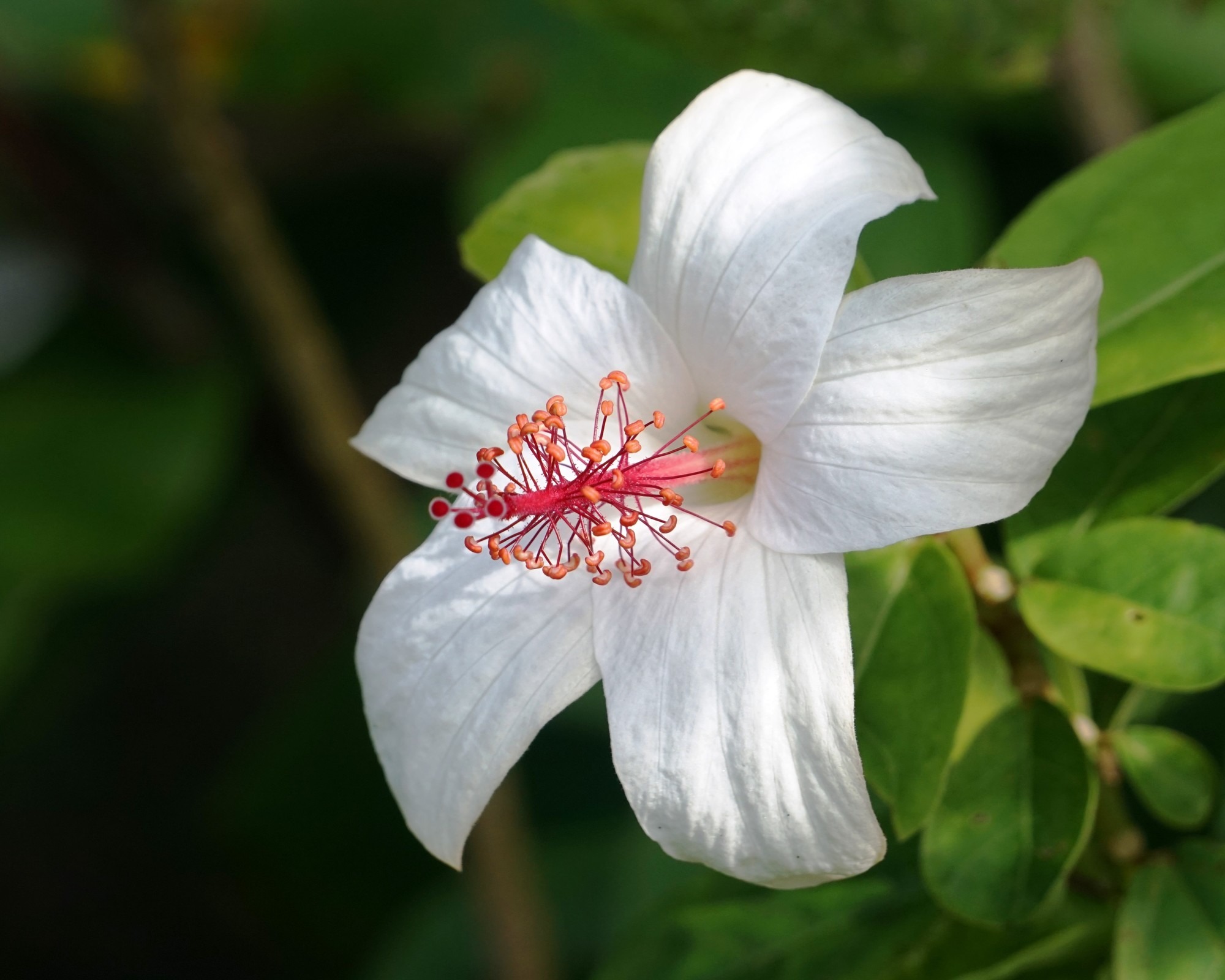
The Hawaiian white hibiscus, a unique and fragrant species, is endemic to the mountains of Moloka’i and O’ahu in Hawaii, though it is now widely cultivated in tropical and subtropical climates. Unlike most hibiscus varieties, this one offers a mild fragrance that adds to its appeal. The plant produces pure white flowers with subtle pink accents, making it an elegant addition to any garden. It thrives in full sun, which enhances its flowering and disease resistance.
Reaching a mature height of 7-10 feet, Hawaiian white hibiscus is best suited for USDA hardiness zones 9-11. It requires well-drained soil and regular moisture to keep the plant healthy. This variety is perfect for those looking for a fragrant, showy plant that can tolerate both full and partial sun conditions.
For gardeners in warmer climates, the Hawaiian white hibiscus offers both beauty and a touch of tropical allure.
Woolly Rose-Mallow (Hibiscus lasiocarpos)

Also known as false cotton, the woolly rose-mallow is a native hibiscus species that thrives in wetland areas, particularly around marshy regions. This plant produces large, striking flowers in white or pale pink, with deep red centers, which bloom from late spring through early fall. It is well-suited for hot, humid weather as long as the soil remains consistently moist. The woolly rose-mallow adds a touch of elegance to garden spaces in humid climates.
Growing to a mature height of 8 feet, this plant does well in USDA hardiness zones 5-9. It thrives in full or partial sun and requires well-drained soil to ensure healthy growth. Regular watering is key to maintaining its vibrant blooms and foliage.
Perfect for wetland gardens or areas with high humidity, the woolly rose-mallow offers an elegant, hardy addition to any garden that can accommodate its moisture needs.
Sleepy Hibiscus (Hibiscus furcellatus)
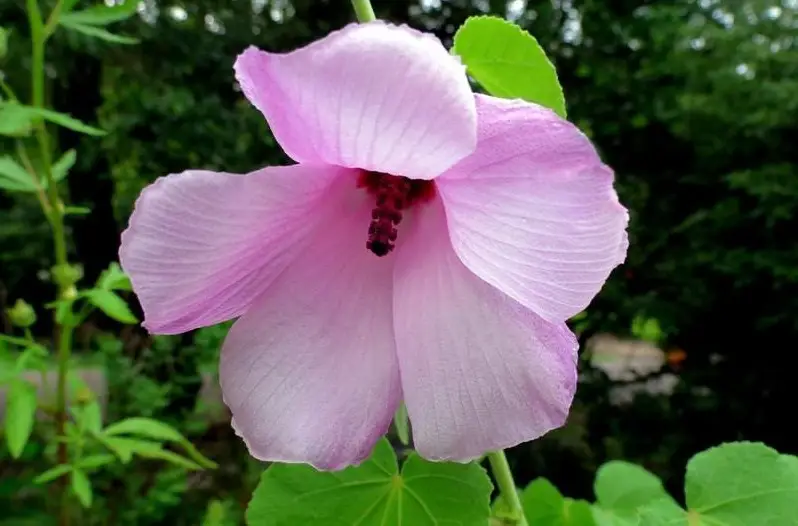
Sleepy hibiscus is a long-lived perennial, known for its deeply cupped, showy flowers in shades of pink and purple, with pink stamens and red centers. This variety is particularly popular for its striking visual appeal, with its large, vibrant blooms that stand out in any garden. Full sun exposure is ideal for promoting abundant blooms and boosting disease resistance. However, in hot, dry weather, this plant may need to be watered once or twice a day to keep the soil consistently moist.
Reaching a mature height of 6-8 feet, sleepy hibiscus is best suited for USDA hardiness zones 5-9. It prefers loamy or sandy soils, which allows for proper drainage while keeping the plant hydrated. Its hardy nature and vibrant flowers make it a great option for gardens seeking a low-maintenance, stunning hibiscus variety.
If you’re looking for a perennial with colorful blooms and a long life, the sleepy hibiscus is an excellent choice for sunny, well-drained garden spots.
Rock Hibiscus (Hibiscus denudatus)
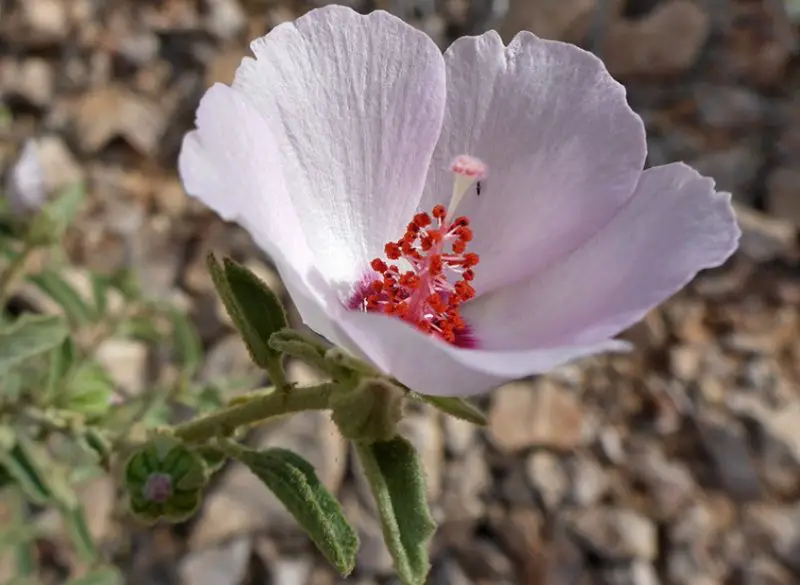
The rock hibiscus is a compact species that thrives in arid climates, particularly in the Southwest U.S. and northern Mexico. Unlike many larger hibiscus varieties, it features smaller blooms and less abundant foliage, making it a suitable option for rocky or sandy soils. Its pink or purple flowers bloom throughout the year, with more profuse blooms occurring when the plant receives occasional watering. This species is drought-tolerant and can withstand dry conditions, making it ideal for low-maintenance gardens in hot, dry areas.
Growing to a mature height of 1-3 feet, rock hibiscus is well-suited for USDA hardiness zones 7a and above. It prefers partial sun and well-drained soil, making it an excellent choice for rock gardens, xeriscaping, or areas with limited water resources. This plant is a perfect addition to gardens where water conservation is a priority.
If you’re looking for a hardy hibiscus that thrives in dry, rocky conditions, the rock hibiscus is an excellent choice.
Double Hibiscus (Hibiscus rosa-sinensis cv.)
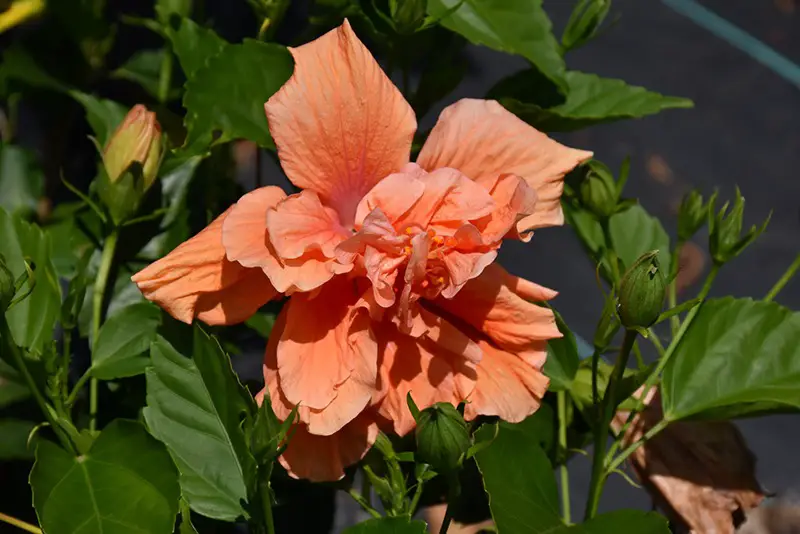
Double hibiscus cultivars are known for their large, ruffled blooms, with multiple layers of petals that create a full, impressive flower. These tropical hibiscuses are perfect for mass plantings, accent plants, and hedges in tropical climates. They can also be grown in containers, making them ideal for gardeners in cooler regions or those with limited space. To maintain their shape and encourage robust growth, it’s best to prune these plants in late fall.
Reaching a mature height of 6-10 feet, double hibiscus thrives in USDA hardiness zones 9-11 and prefers full sun and well-drained soil. The flowers come in a variety of colors, including red, pink, yellow, orange, and white, providing plenty of options for colorful garden displays. Regular watering is necessary to keep the soil evenly moist and promote healthy blooms.
With their showy flowers and versatile growth habit, double hibiscus makes a stunning addition to both tropical and container gardens.
Hibiscus ‘Black Dragon’ (Hibiscus rosa-sinensis ‘Black Dragon’)
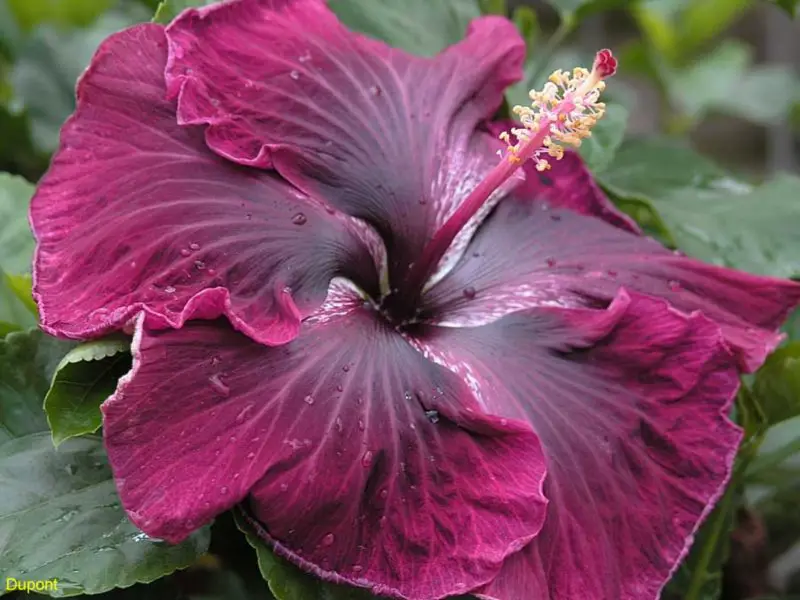
Hibiscus ‘Black Dragon’ is an award-winning hybrid known for its strikingly large, eight-inch flowers that feature crimson petals and rare, deep purple centers. This tropical hibiscus variety is slow-growing but spreads once it reaches around 18 inches tall. It thrives in tropical climates or can be grown in large containers as an annual, as long as the soil is very well-drained. The unique color combination of crimson and purple gives it a dramatic presence in gardens.
Growing to a mature height of 3-6 feet, this hibiscus prefers full sun and well-drained soil. It is well-suited for USDA hardiness zones 9-11 and requires regular watering to keep the soil consistently moist. The deep purple centers of ‘Black Dragon’ contrast beautifully with the vibrant red petals, making it a standout in any garden.
For gardeners looking for a hibiscus that offers dramatic blooms and unique color, the ‘Black Dragon’ hibiscus is a showstopper.
Hibiscus ‘Fiesta Del Sol’ (Hibiscus rosa-sinensis ‘Fiesta del Sol’)
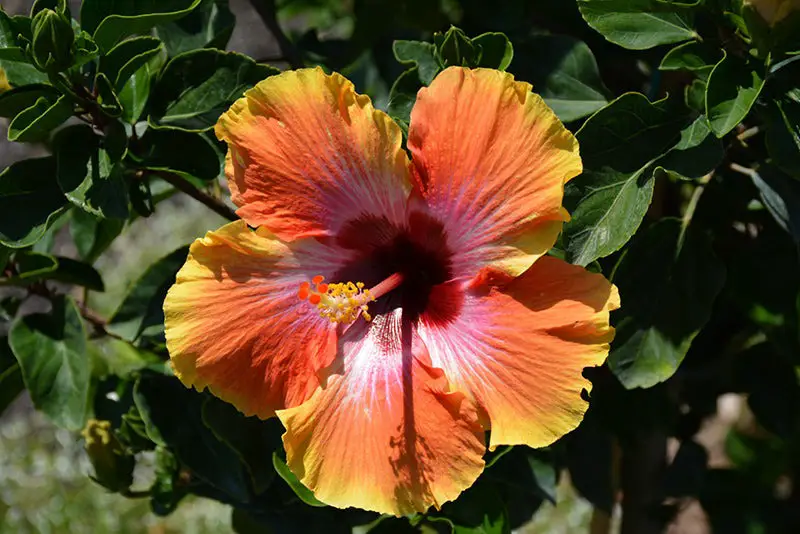
The hibiscus ‘Fiesta Del Sol’ is a striking hybrid known for its dramatic, multicolored flowers. Each bloom opens orange in the morning, gradually fading to yellow as the day progresses. The center features a deep burgundy ringed by vibrant pink and white, creating a bold contrast. This variety thrives in full sun and requires consistent watering to produce its prolific blooms. If planting in the ground, ensure the hibiscus has ample space to grow; otherwise, it can also be grown in a large pot.
Reaching a mature height of 2-4 feet, ‘Fiesta Del Sol’ is well-suited for USDA hardiness zones 10-11. The plant prefers well-drained soil and should be kept moist to promote the best growth and flowering. Its striking color combination makes it a standout in gardens, particularly when grown in containers or as an accent plant.
For gardeners seeking a vibrant and colorful hibiscus with impressive blooms, ‘Fiesta Del Sol’ is an excellent choice.
Hibiscus ‘Midnight Tryst’ (Hibiscus rosa-sinensis ‘Midnight Tryst’)
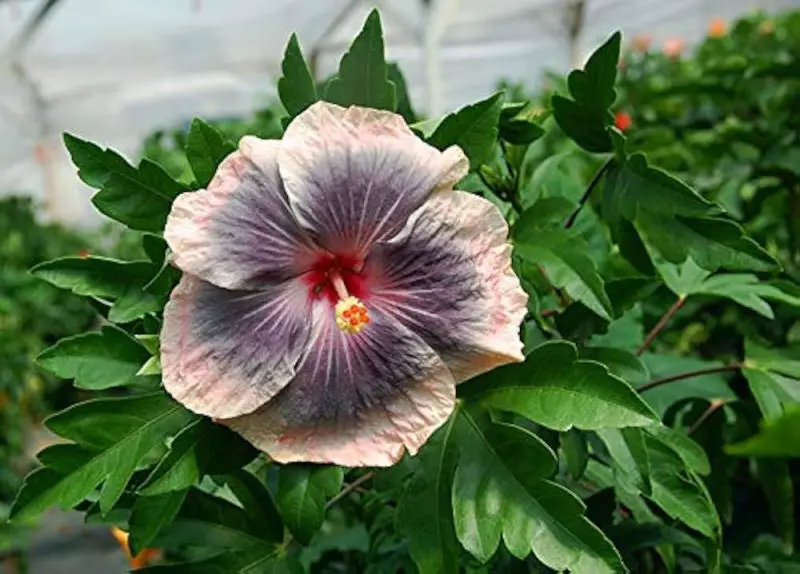
The hibiscus ‘Midnight Tryst’ is a captivating hybrid with wide, multicolored blooms that fade in intensity by the second day. The petals are edged with pink and feature a rich purple-gray starburst pattern, with white veining leading to a bright red center and yellow stamen. These flowers offer a kaleidoscope of colors, making it a stunning addition to any garden. To promote its beautiful blooms, plant it in full sun and provide plenty of water and fertilizer.
With a mature height of 2-4 feet, ‘Midnight Tryst’ grows best in USDA hardiness zones 10-11. It requires rich, well-drained soil and should be watered consistently to keep the soil evenly moist. This hybrid is perfect for those who want to add a touch of drama and intrigue to their garden with its unique and eye-catching flower coloration.
If you’re looking for a hibiscus with striking and colorful flowers that stand out, ‘Midnight Tryst’ is a must-have.
Hibiscus ‘Queen of Dreams’ (Hibiscus rosa-sinensis ‘Queen of Dreams’)
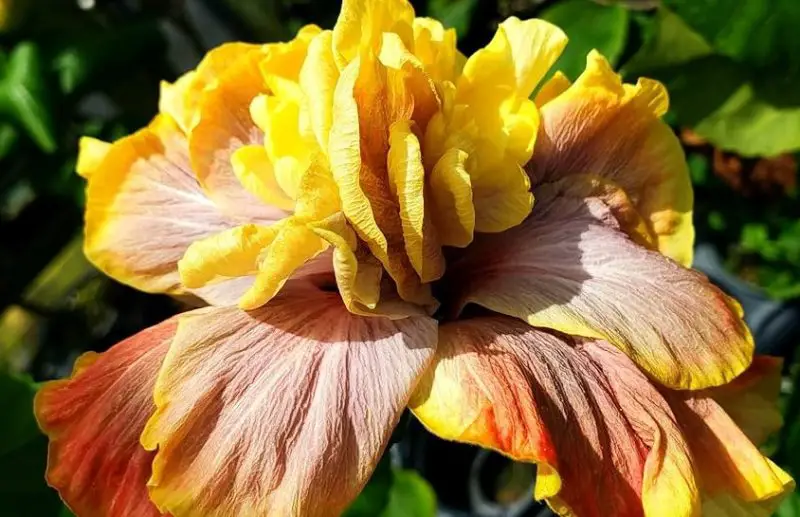
Hibiscus ‘Queen of Dreams’ is a rare and beautiful multicolored double hibiscus. The large, frilly flowers shift in color from peach to pink to lavender, offering a striking visual effect. Ideal for container planting, ‘Queen of Dreams’ thrives with full sun, well-drained soil, and regular fertilization to encourage continuous blooming throughout the growing season.
This hibiscus grows to a mature height of 2-4 feet and is well-suited for USDA hardiness zones 9-11. It prefers to be watered regularly to keep the soil evenly moist, which will help maintain healthy growth and colorful blooms.
If you’re looking for a hibiscus with soft, romantic color transitions, ‘Queen of Dreams’ is a wonderful choice.
Hibiscus ‘Kona’ (Hibiscus rosa-sinensis ‘Kona’)
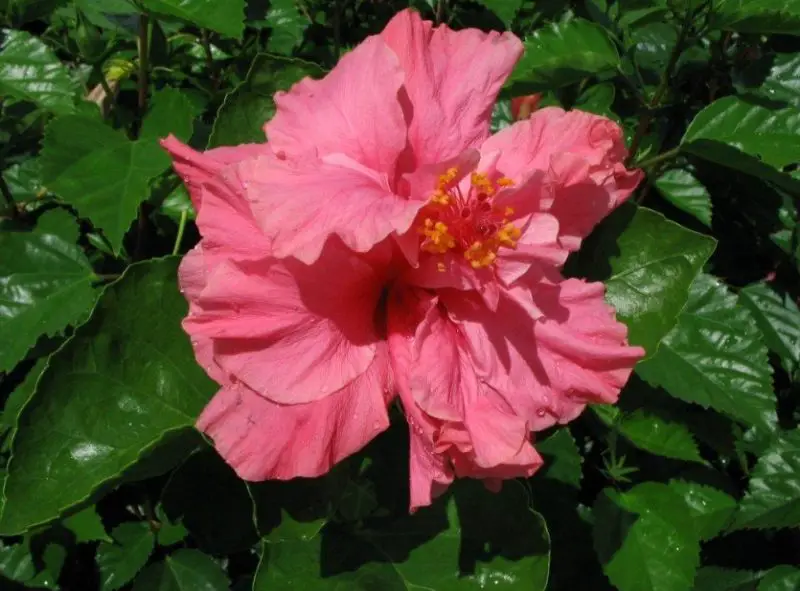
Hibiscus ‘Kona’ is known for its frilly, double flowers that shift between shades of pale and darker pink. Unlike some hibiscus varieties that bloom at specific times, this cultivar produces abundant blooms throughout the growing season, making it an excellent choice for a long-lasting display of color. It is ideal for both tropical climates and as an annual in cooler regions when grown in a container.
Growing to 2-4 feet in height, ‘Kona’ thrives in USDA hardiness zones 9-11 and prefers full sun for the best blooming potential. The plant thrives in moist, light, well-drained soil and should be watered regularly to keep the soil evenly moist.
For a hibiscus with a continuous show of color and a gentle, romantic look, ‘Kona’ is a great addition to your garden or patio.
Hibiscus ‘Flameball’ (Hibiscus rosa-sinensis ‘Flameball’)
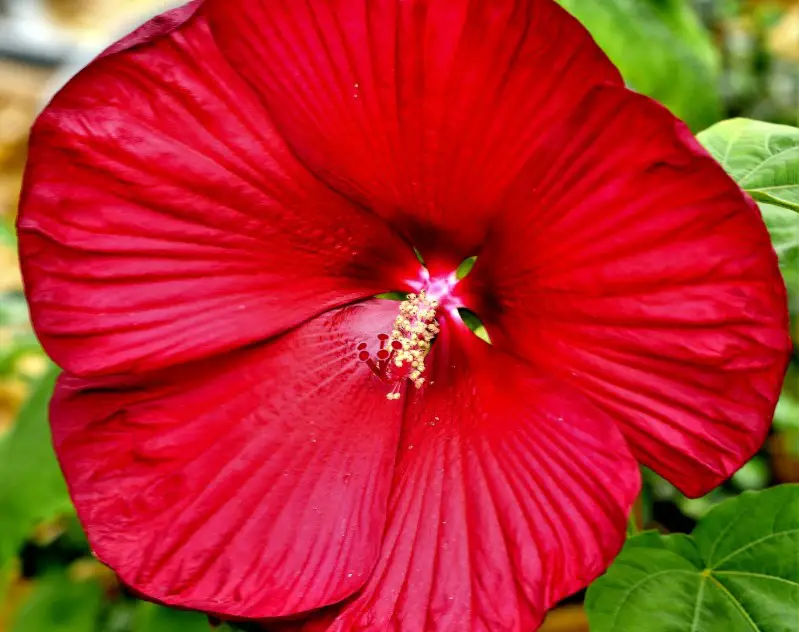
Hibiscus ‘Flameball’ is a striking hybrid known for its fluffy, double orange blooms with vivid yellow streaks or edges. The flowers can reach up to five inches wide and appear throughout the summer, providing vibrant color to the garden. This hibiscus thrives in full sun and should be watered regularly during the growing season, with slightly reduced watering in the fall and spring to prevent overwatering.
Reaching a mature height of 2-4 feet, ‘Flameball’ is suited for USDA hardiness zones 9-11. It grows best in well-drained soil, where it can maintain its lush, vibrant foliage and stunning flowers.
For gardeners looking to add a pop of fiery color to their landscape, ‘Flameball’ is a fantastic choice, offering continuous blooms throughout the warmer months.
Hardy Hibiscus ‘Midnight Marvel’ (Hibiscus moscheutos ‘Midnight Marvel’)
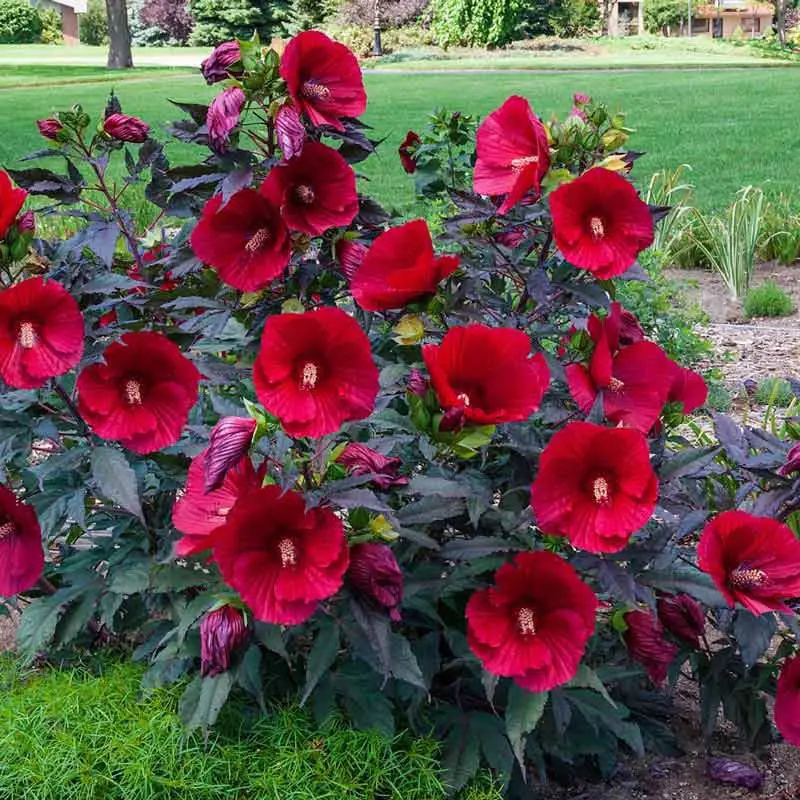
Hardy Hibiscus ‘Midnight Marvel’ stands out with its deep red, cup-shaped blooms, which can reach an impressive nine inches across. The bold flowers contrast beautifully with the plant’s dark, purple-green foliage, making it a striking addition to any garden. Blooming from midsummer through early fall, this cultivar is ideal for adding drama and color to your landscape.
Growing to 4-5 feet in height, ‘Midnight Marvel’ thrives in USDA hardiness zones 4-9. It prefers full to partial sun and moist, well-drained soil. This hibiscus is perfect for wet or swampy areas and can tolerate a variety of soil types, making it a versatile option for many garden conditions.
If you’re looking for a hardy, low-maintenance hibiscus with large, vibrant blooms, ‘Midnight Marvel’ is an excellent choice, especially for those in cooler climates or those with moist garden areas.
Hibiscus ‘The Path’ (Hibiscus rosa-sinensis ‘The Path’)
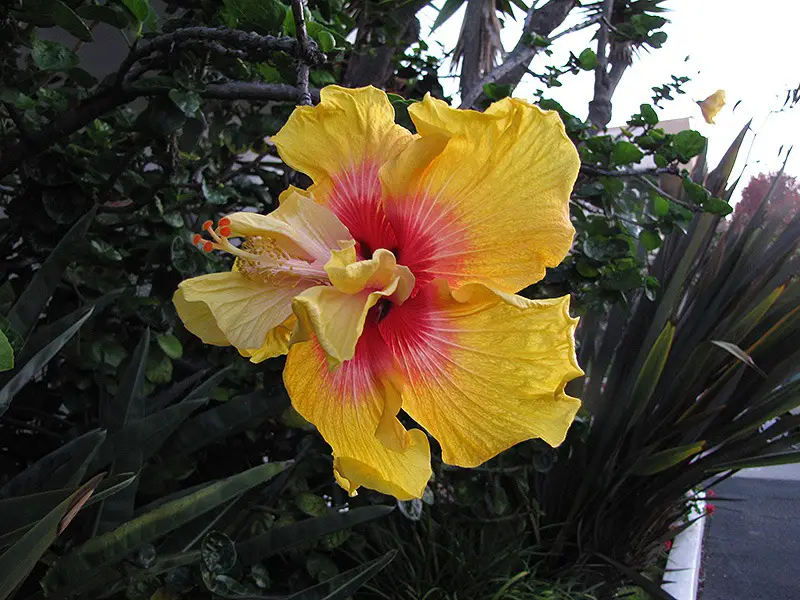
Hibiscus ‘The Path’ is a beautiful hybrid that produces flowers with an ombre effect, transitioning from yellow and orange at the edges to deep pink at the center. This light-loving cultivar thrives in full sun and requires regular watering to keep the soil moist but not soggy. It is a perfect option for gardeners looking to add vibrant color to their landscape.
Reaching a mature height of 2-4 feet, ‘The Path’ thrives in USDA hardiness zone 10 and requires well-drained, moist soil. Its unique flower coloration creates a stunning visual appeal, making it an excellent choice for borders, containers, or as an accent plant in sunny areas.
For a hibiscus with a bold and colorful flower pattern, ‘The Path’ provides an attractive and dynamic addition to your garden.
Hibiscus ‘Voodoo Queen’ (Hibiscus rosa-sinensis ‘Voodoo Queen’)
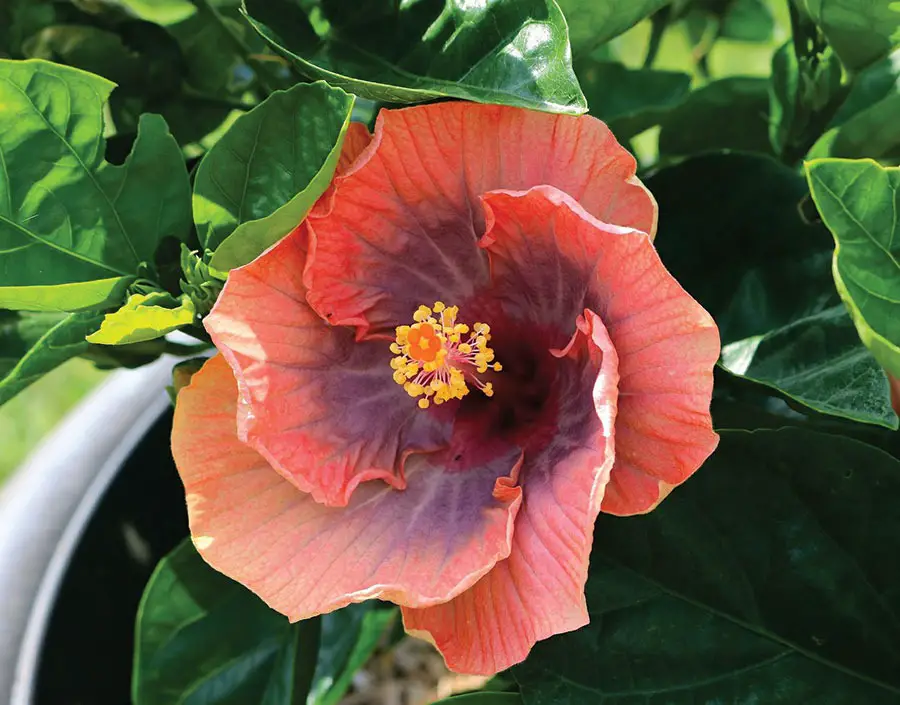
Hibiscus ‘Voodoo Queen’ is a stunning hybrid known for its unique color-changing blooms. Starting the day with reddish-orange flowers featuring a purple center and red throat, the blossoms transition to yellow with lavender-gray centers by afternoon. The seven-inch blooms stand out beautifully against glossy dark green leaves. To ensure healthy growth, provide this plant with plenty of sunlight, water, and fertilizer, especially during the summer months.
Reaching a mature height of 2-4 feet, ‘Voodoo Queen’ is suited for USDA hardiness zones 9-11. This variety thrives in moist, well-drained soil and should be watered consistently to keep the soil evenly moist. Perfect for those seeking a hibiscus with eye-catching color shifts throughout the day, ‘Voodoo Queen’ makes a dynamic addition to gardens and containers alike.
For a hibiscus with a dramatic color transformation, ‘Voodoo Queen’ is a striking and beautiful choice.
Hibiscus ‘Christmas Angel’ (Hibiscus rosa-sinensis ‘Christmas Angel’)
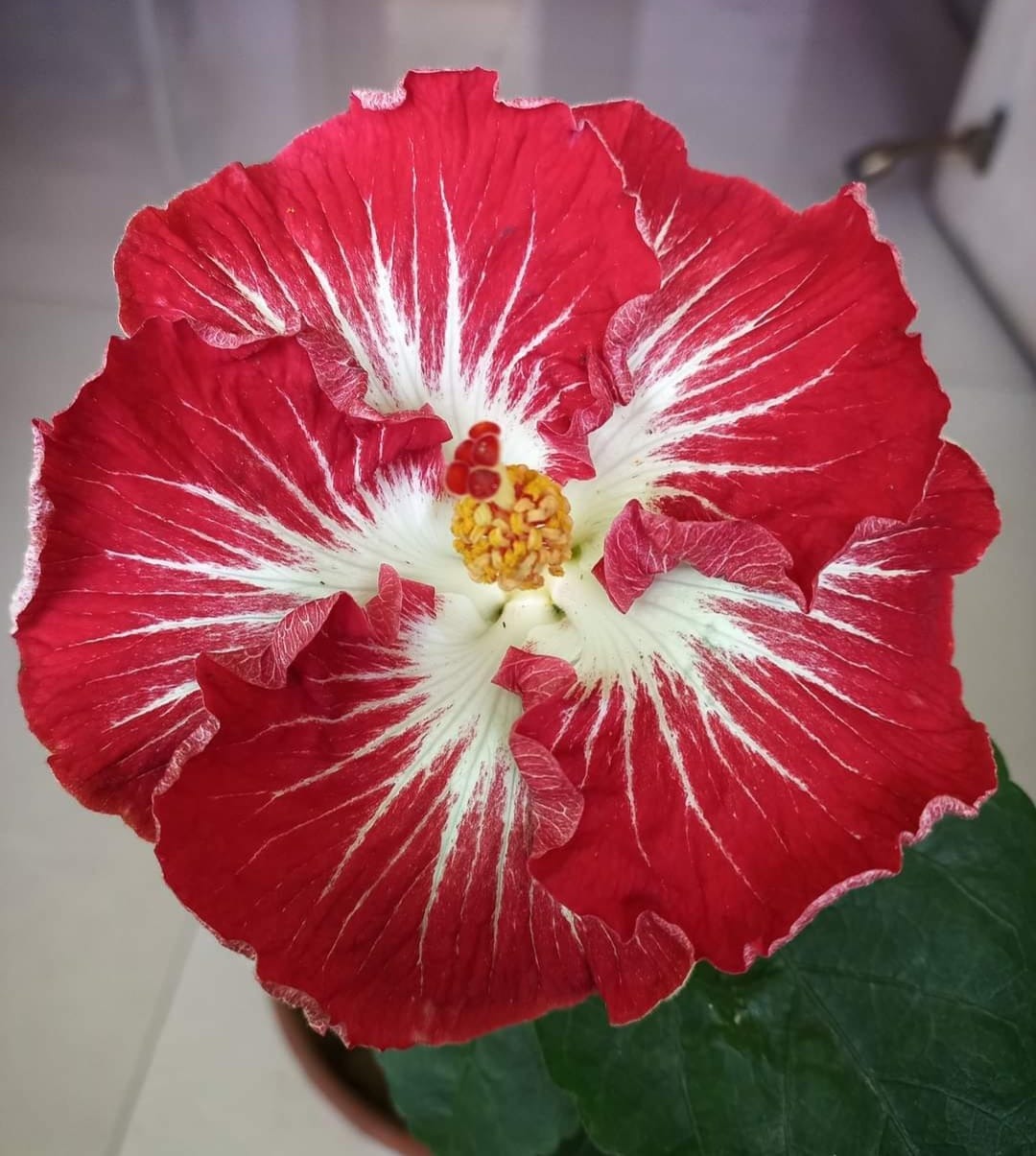
The hibiscus ‘Christmas Angel’ offers a festive twist on traditional hibiscus flowers. It features bright red petals that frame a vivid white center with prominent white veins. This stunning color combination creates a visually striking contrast, making it a favorite for adding seasonal charm to gardens or indoor spaces. Plant ‘Christmas Angel’ in full sun, or keep it indoors in a warm spot with bright, direct sunlight, such as a south-facing window.
With a mature height of 2-4 feet, ‘Christmas Angel’ thrives in USDA hardiness zones 9-11. It prefers well-drained soil and should be watered regularly to keep the soil evenly moist. This hybrid is perfect for those looking to brighten up their space with a bold, seasonal hibiscus variety.
If you’re seeking a hibiscus with bright, festive colors, ‘Christmas Angel’ is an excellent choice to consider.
Hibiscus ‘Variegated Pink’ (Hibiscus rosa-sinensis ‘Variegated Pink’)
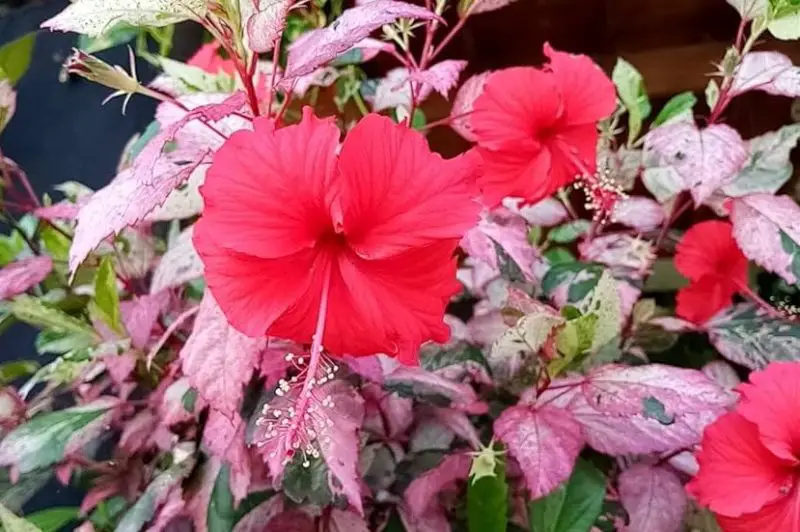
Hibiscus ‘Variegated Pink’ is a unique tropical hybrid that offers multicolored foliage, adding extra visual interest to your garden. The gray-green leaves are delicately edged with creamy white variegation, which enhances the ruffled pink blooms. This compact hibiscus is a standout with its distinctive foliage and vibrant flowers, making it a great choice for gardens with diverse plantings or as a container plant.
Growing to a mature height of 2-3 feet, ‘Variegated Pink’ thrives in USDA hardiness zones 9-11. It prefers moist, well-drained soil and should be watered to keep the soil moist, but not overly damp. For the best results, ensure the plant receives plenty of sunlight, which will help promote blooms and maintain its variegation.
For a hibiscus that offers both colorful blooms and unique foliage, ‘Variegated Pink’ is a charming addition to any garden or patio.
Hibiscus ‘White Hot’ (Hibiscus rosa-sinensis ‘White Hot’)

Hibiscus ‘White Hot’ is a striking hybrid that changes its color with the seasons. During the cooler days of spring and fall, its large red flowers feature yellow speckles and a white center, while in the warmer summer months, the flowers transform into a bright yellow with reddish-orange areas. This stunning color change makes ‘White Hot’ a dynamic addition to any garden, providing seasonal variety.
Growing to a mature height of 2-4 feet, ‘White Hot’ thrives in USDA hardiness zones 9-11. It prefers full sun, which helps to bring out its vibrant colors, and well-drained soil, including loam and sandy loam. The plant should be watered consistently to keep the soil moist, promoting healthy growth and vibrant blooms.
For a hibiscus that offers a seasonal color change, ‘White Hot’ is an excellent choice to add visual interest to your garden.

